HICKOX (or HICTOX), CHARLES RALPH (1837-1901). First lieutenant, 5th United States Artillery, Battery F, United States Regular Army. Hickox was born in Warren, Ohio, and at the time of the 1850 census lived in Portage, Ohio, where he was attending school. He relocated to New York in 1855, where he went into the grain business.
During the Civil War, he enlisted as a second lieutenant on May 14, 1861, and mustered into the 5th Light Artillery, Regular Army, on that date. The Fifth Artillery was formed as part of the first expansion of the Regular Army since 1855, when then Secretary of War Jefferson Davis had added two infantry and two cavalry regiments. On May 4, 1861, President Abraham Lincoln added 10 infantry and two cavalry regiments and one artillery regiment, the Fifth, whose twelve companies would be outfitted with horses and guns. All new field grade officers (colonel, lieutenant colonel and major) were drawn from the Regular Army and were West Point graduates as were eleven of the twelve battery captains. Hickox is listed as one of the two civilians in Battery F who received a commission. He was promoted to first lieutenant on June 11, 1864, and resigned on December 2, 1864. According to his obituary in the Washington Times, he fought at the Battle of Gettysburg, Pennsylvania. His unit served in Northern Virginia, West Virginia, Maryland and Pennsylvania.
Hickox returned to his grain business after his military service. On December 29, 1864, he married Helen Church, of Fort Hamilton in Brooklyn. The 1875-1876 New York City Directory lists him as a flour merchant on Whitehall Street. The 1880 census reports that he lived at 557 East 55th Street in Manhattan with his wife, five children, niece and mother-in-law. At that time, he was a flour merchant. He is listed as a merchant on Whitehall Street in the 1891-1892 New York City Directory living at 657 Madison Avenue. The 1900 census states that he was a widower who was residing at 126 West 94th Street in Manhattan with two of his adult children and was still working as a produce merchant.
As per his obituary in the Washington Times, which confirms his Civil War service, he was a member of the Produce Exchange and served at one time on its board of managers. In addition, he belonged to the Union League Club as of 1878, the New England Society, the Loyal Legion and Lafayette Post #140 of the G.A.R. He last lived at 126 West 94th Street in Manhattan. A widower, he was survived by a daughter and two sons, both of whom were lawyers. Section 103, lot 19476, graves 7 and 8.
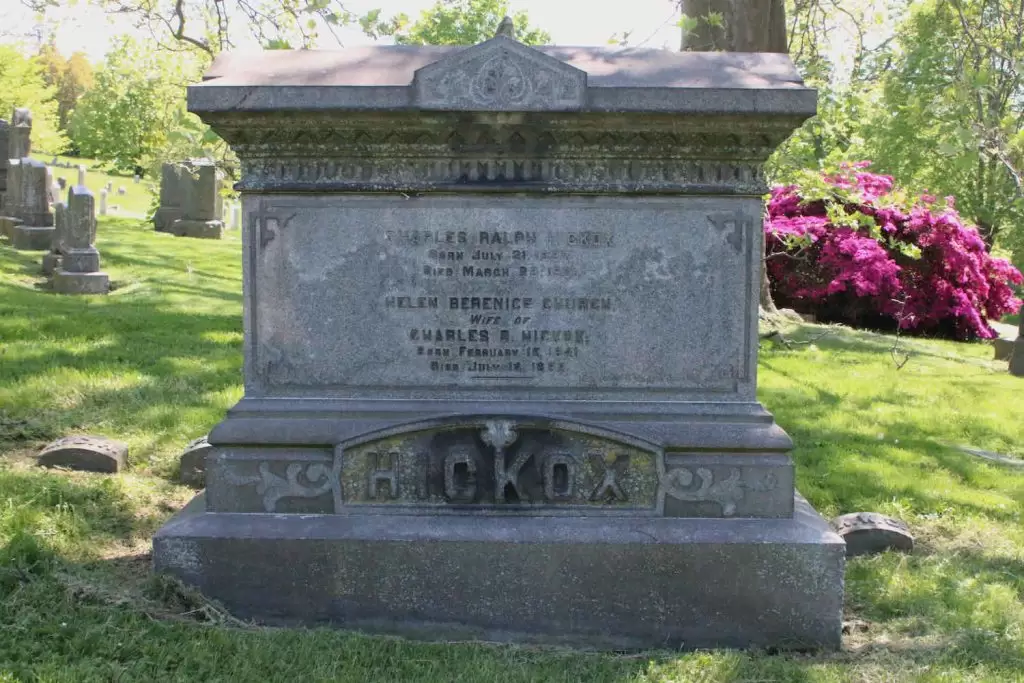
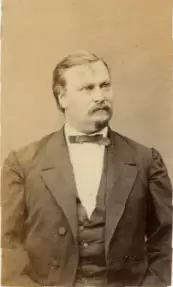
HICKS, CHARLES CARROLL (1827-1906). Captain and acting quartermaster, 10th Georgia Infantry, Companies A and G, Confederate States of America; rank unknown, Confederate States Navy. Hicks was born in Columbus, Georgia, but according to a descendant, was living in upstate New York or Vermont with his family in the early 1830s while his father was the captain of the Water Witch, a Hudson River steamer. He was 5′ 8½” tall, with a fair complexion, blue eyes, high forehead, straight nose, and light hair. At eighteen, he was serving in the United States Navy aboard in USS North Carolina in Brooklyn when he wrote to his father asking forgiveness for an unnamed transgression.
Civil War Bio Search
Hicks wrote, in part, “… You have pierced the healing wounds of passion in my heart and set them to bleeding again. Father, once more I tell you … I am an altered boy….” After his Naval service, his life took many turns, many of them notorious. He practiced law, took up acting and traveled widely. Hicks fought in the Yucatan at the tail end of the Mexican War where he earned the nickname “Yankee Dare Devil.” His descendant notes that he was involved with the Filibusterers, a rogue military group led by William Walker, which plotted to overthrow governments in Central America. He ventured there many times and, on a planned trip to Nicaragua in 1856, he was arrested before his ship, the Orizaba, set sail from the United States and held in $2,000 bail. He argued that he was not sailing as a U.S. citizen but as an officer in the Army of General Walker in the service of an independent government. He was soon released and became deeply involved in the theater, playing Iago in Othello at the Old Broadway Theater in 1858 and Hamlet a year later at Burton’s Theater. Hicks starred in several productions with William Booth, the brother of John Wilkes Booth, President Abraham Lincoln’s assassin. He traveled to Europe in the fall of 1860 where he joined the forces of Giuseppe Garibaldi and his Red Shirts in their quest to unite Italy. He wrote to his sister and the Daily Alta California about his experiences, boasting:
I arrived in Naples and proceeded immediately to Caserta, the head-quarters of the Dictator [Garibaldi], who received me like a Prince, saying, ‘It gives me much pleasure to welcome a representative from the great and glorious Republic, America.’ For two days I was quartered at the Royal Palace, and feasted at the Royal table, with the Dictator and his staff… We are now occupying Santa Maria and San Angelo, near the walls of Capua, and the Royalists keep up an almost incessant bombarding from morning till night, wasting powder and shells. Our camp is all alive and we are hourly expecting a general battle, which will be the most fearful of any which has taken place. I am now writing to an accompaniment of the booming of the enemy’s cannon and the call of our own bugle. We are ready for them.
Upon his return to New York, Hicks lectured about his Italian adventures and admiration for Garibaldi, including a speech in Bennington, Vermont, where his wife lived, but headed South at the onset of the Civil War. He enlisted as C. Carroll Hicks as a third lieutenant, mustered into Company A of the 10th Georgia, and appeared on the rolls at Camp Fairfield, Virginia, on May 28, 1861. He was appointed captain and acting quartermaster on June 26, 1861, at which time he was ordered to report for duty to the 10th Georgia Regiment’s Company G from which he was absent with leave in Richmond, Virginia, in August and resigned on September 5, 1861. Although Hicks referred to himself as “colonel,” his descendant notes that his obituary reports that Hicks was given that title by Victor Emmanuel for his bravery in Italy. He then gained notoriety as a blockade runner. An article dated February 21, 1863, in The New York Times identified him as a Confederate detective from Richmond, Virginia, and noted that he had been arrested at the St. Nicholas Hotel in New York City that day. He was held as a political prisoner at Fort Lafayette (see document below), off the Narrows in Staten Island, a site where high file Confederates were imprisoned. On February 23, he was turned over to the Office of the Provost Marshal General of the War Department in Washington, D.C. Upon hearing of Hicks’s arrest as a spy, the Bennington [Vermont] Banner, which had praised Hicks after his speech on Garibaldi called him “an undoubted traveling specimen of unadulterated rascality.” The following newspaper account of March 24, 1863, includes information that Hicks fought at the Battle of First Bull Run; this, however, appears not to have been true and is most likely an embellishment of Hicks’s “larger than life” story. The correspondent in San Francisco’s Daily Alta California reported:
A Notorious Secessionist in Trouble. Charles Carron (sic) Hicks, a Secessionist of considerable notoriety, was arrested in the barroom of the St. Nicholas Hotel, about half-past four o’clock yesterday afternoon, on suspicion of being a spy. The prisoner, it appears, attracted the attention of the officer by his loud abuse of the Administration and profuse praise of Jeff. Davis and the Southern Confederacy. He openly boasted of his having once held a commission in the rebel army, and spoke of Stonewall Jackson and Jeff. Davis in the warmest terms. When receiving some change from the barkeeper for a round of drinks, he became very indignant at being offered some postal currency, and said he would take nothing but specie or Confederate bills. He had no faith in Lincoln’s “greenbacks,” he said, and became so abusive in his remarks that the officer deemed it his duty to take him into custody.
Upon being brought before General Wool, the prisoner acknowledged his name and said he commanded a regiment of rebel soldiery at the seven days’ battles before Richmond. Subsequently he said he was appointed Provost-Marshal at Richmond, and after serving several months in that capacity he grew tired of the service and threw up his commission. Upon being asked if he had his discharge from the rebel Secretary of War, he replied in the negative.
After considerable questioning, General Draper decided to imprison the accused until he would give a satisfactory account of himself or take the oath of allegiance.
When the Slave States seceded, and the news of the attack upon Fort Sumter reached this city, Hicks, who was always a fire-eater, immediately started for Charleston, and offered his services to the rebels. He procured a position as Captain in an artillery regiment, but soon rose to the position of Colonel, and at the Battle of Bull Run distinguished himself by his bravery and determination “to kill off the d— — —d Yankees,” as he expressed it. Subsequently he took a position on General Winder’s staff at Richmond, and for a long time acted in the capacity of Provost-Marshal.
We next hear of him as a blockade runner, and in one of the Southern newspapers he is spoken of as a person who has done the Confederacy some service by the skillful manner in which he landed a valuable cargo at Charleston. The Richmond Dispatch of the 17th instant advises us of his very latest movement, and under its local head makes mention of him as follows:
A FORMER CITIZEN TURNED TRAITOR— A few months since the privateer Retribution sailed from a Southern port, having as captain Vernon Locke, a well known English shipmaster, and as first and second officers Captain Parker, formerly of the privateer Dixie, and Charles Carroll Hicks, formerly of General Winder’s police. It was the declared intention of Captain Locke to run all his prizes into Wilmington, North Carolina, if possible. After being out a week he captured the brig T. Elliot, of Boston, on board of which was placed a prize crew in charge of Hicks with orders to make his way into Wilmington. The Yankee papers, in giving an account of the retaking of the prize, says she was delivered up by her crew. It appears that after Hicks got possession of the T. Elliot he cruised around for a short time and finally bore away to St. Thomas, where the vessel was given up to Commodore Willis’ squadron.
From the above extract it would appear that Hicks is a double traitor. We are inclined to doubt the truth of the Dispatch’s statement, however, and think that the paragraph is intended as a ruse to throw us off our guard concerning the rebel’s real movement. His mission at the North cannot be a very friendly one at all event, and he should be under the strict surveillance of the police during his stay in this city.
His descendant notes that Hicks served 190 days as a prisoner of war at the Old Capitol Prison, where he wrote to his brother Julius (see), a Union soldier, “I have left the Confederacy forever…I came to New York in good faith…but I am at present in prison.” In spite of Julius’s request to Secretary of War Edwin M. Stanton to visit his brother, Julius’s request was denied. Eventually, Charles Hicks was pardoned on condition “that he not enter the service of the vessels again.” He was released on August 24, 1863, and according to a news article, “He states that he was kindly treated and rendered comfortable by the officers of the prison, and has reason to regret only his confinement.”
Hicks returned to his acting career with a traveling troupe, married again, this time to the stage actress known as Ellen Grey (often cited as the author of the mysterious “Ellen Eyre” letter to Walt Whitman) in 1866. By 1868, he returned to the practice of law in Fort Wayne, Indiana, but was in financial difficulty. That same year, he became involved in politics supporting Horatio Seymour, the governor of New York who was seeking the Democratic nomination for President; Seymour was a critic of President Lincoln and the Emancipation Proclamation. When Hicks stumped for Seymour in Indiana, the New Albany (Indiana) Daily Commercial, referred to Hicks as a “malignant rebel” and reported, “A fine fellow is he to instruct the people of Indiana ‘how to maintain the Constitution.’” After his law practice floundered, he achieved some success as a traveling fabric salesman, eventually settling in Philadelphia. He was living in Philadelphia in 1884 when he was briefly confused with a British daredevil named Hicks who was embroiled in military intrigue in Egypt and Sudan. It took months for reporters to straighten out the details of the identity of William Hicks, the adventurer. In 1904, he became a resident at the Old Men’s Home in Philadelphia, Pennsylvania, where he died. Section 180, lot 12164, grave 6.
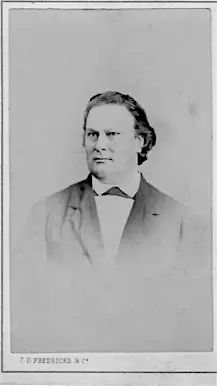
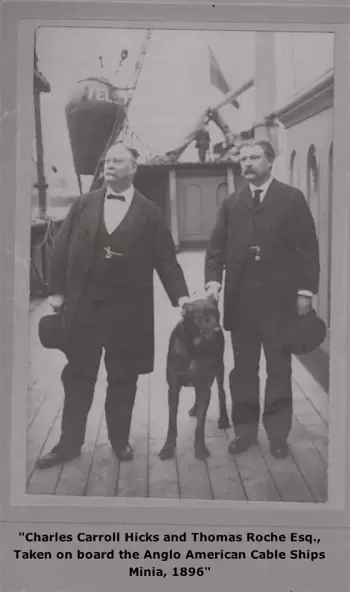
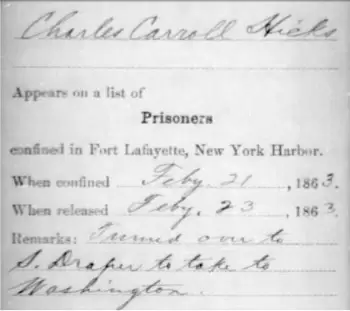
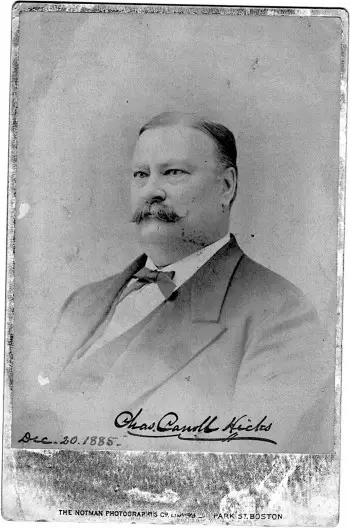
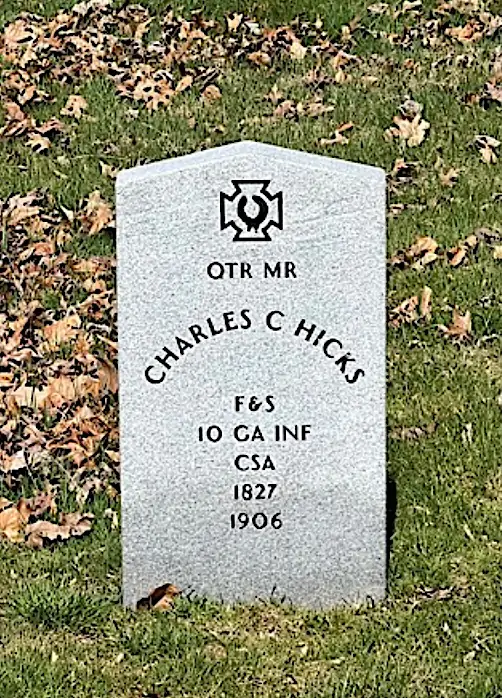
HICKS, JR., HENRY W . (or A.) (1839-1863). Captain, 165th New York Infantry, Company B; private, 7th Regiment, New York State National Guard, Company F. Of English birth, he enlisted at New York City as a private in 1861 and mustered into the 7th Regiment, one of the first units to take up arms. The 7th was at Washington, D.C., and later fought at the Battle of First Bull Run, Virginia, on July 21 before mustering out in August 1861. When the 7th Regiment was called up in 1862, Hicks re-enlisted on May 25, 1862, mustered into the 7th Regiment that day, and mustered out with his company after three months on September 5 at New York City. He re-enlisted at New York City as a captain on September 18, 1862, and was immediately commissioned into the 165th Infantry, part of the 2nd Duryée Zouaves. He was officially promoted to captain on December 3, 1862, with rank from September 18. Hicks wrote to his brother from Port Hudson, Louisiana, on June 11, 1863:
Dear Sam:
We have made an attack on the Batteries here and we have sustained very heavy loss and were repulsed, as I have already informed you through a letter to mother. We are about to make another assault, and I have been detailed, with one hundred and fifty (150) men, to lead it. That is to be the forlorn hope. I send this through a friend of mine who is kind enough to volunteer to see it posted from New Orleans. The affair will be pretty desperate. I will let you know at the earliest opportunity what the result may be. I merely wrote this to let you know where I am and to be prepared for anything that may happen. In case I fall, I will bid you now an affectionate farewell.
Your affectionate brother,
HENRY W. HICKS, Jr.
Acting Major 165th N.Y.S.V., 2d Zouaves
Don’t say anything to the family until you hear the result. If I fall, my friends in the regiment will inform you.
His obituary in the Evening Post notes that he was engaged in all of the assaults on Port Hudson, in one of which he led his regiment with “distinguished gallantry.” Hicks was discharged on July 13, 1863, as per Special Order 169, from Headquarters, Department of the Gulf. He died from typhoid fever on August 19, at his home in Clifton, Staten Island. Although William Swinton, in his History of the Seventh Regiment (1876), states that Hicks was mortally wounded at Port Hudson, that is incorrect; his obituary, which confirms his Civil War service, confirms that he died at home from typhoid fever, contracted at Port Hudson. Section 75, lot 11819.
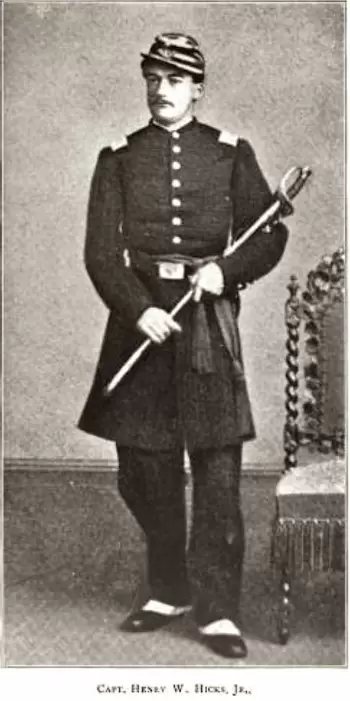
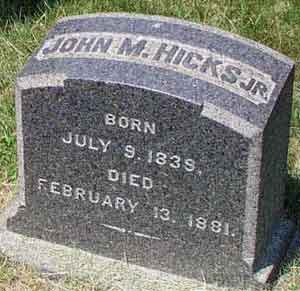
HICKS, JR., JOHN M. (1839-1881). Private, 13th Regiment, New York State National Guard, Company G. After enlisting as a private at Brooklyn on May 28, 1862, Hicks mustered into the 13th Regiment, Heavy Artillery, and mustered out three months later on September 12 at Brooklyn. As per the census of 1880, he was a wholesale grocer. His funeral took place at the home of his father at 115 Remsen Street in Brooklyn. Hicks died from bronchitis. Section 60, lot 777.
HICKS, JULIUS C. (1825-1866). Major, 16th New York Heavy Artillery, Companies E, A, and I; captain, 15th New York Engineers, Company D. Originally from Rutland, Vermont, and a builder by trade, Hicks was 5′ 7″ tall with blue eyes, brown hair and a light complexion at the time of his enlistment. After enlisting as a captain at New York City on May 9, 1861, he was commissioned into the 15th New York Engineers the next month on June 17, and mustered out on June 25, 1863. Returning to service on December 16, 1863, he re-enlisted as a captain at Rikers Island, New York, and was immediately commissioned into Company E of the 16th New York Heavy Artillery. He was discharged on March 1, 1864, upon report of the examining board, and was promoted to second lieutenant on June 1, 1864, effective upon his transfer to Company A. Hicks rose to the rank of captain on June 22, 1864, effective upon his transfer to Company I that day. On November 13, 1864, he was promoted to major and was transferred to the Field and Staff. As per his widow’s pension application, Hicks was treated for hemorrhage of the lungs from the fall of 1864 until his discharge. He mustered out on August 21, 1865, at Washington, D.C.
Julius and Charles Carroll Hicks, a Confederate officer and spy (see) were brothers. He succumbed to consumption, contracted while in the line of duty, at his home at 108 East 14th Street in New York City. His widow, Armenia Hicks, applied for and received a pension in November 1866, certificate 104,949. In support of Mrs. Hicks’s pension request, numerous written testimonies were forwarded to the Pension Bureau. Hicks’s local physician attributed his tubercular consumption to exposure and hardships while serving in the Army. Hicks’s mother-in-law, with whom he resided, testified that Hicks never applied for a pension because he fully expected to recover and that having “comfortable pecuniary circumstances” would not need one. However, “he at last got so bad that he was unable to leave the house, and before he sought to obtain his pension could not bear the necessary fatigue to make application for the same.” Colonel J. J. Morrison of the 16th Heavy Artillery wrote that Hicks had been in good health without any complaints until the fall of 1864 when he had a lung hemorrhage, a condition that continued to plague him until his discharge and one contracted in the service and while in the line of duty. One of the surgeons who treated him during his last months of service noted that in the spring of 1865, the lung hemorrhage was very profuse and that at the time of Hick’s discharge, he was “laboring under the same disease.” Other written testimonies attested to his general good health while in service except for instances of “camp diarrhea.” He was the brother-in-law of William Wallace Horton (see). Section 180, lot 12357.
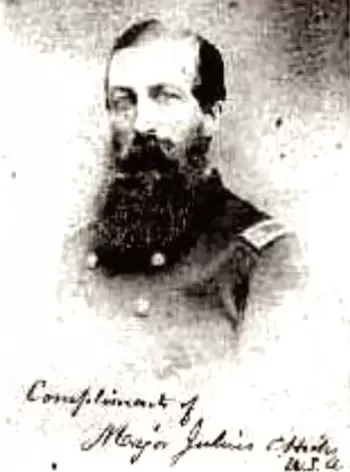
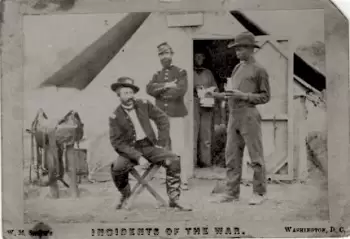
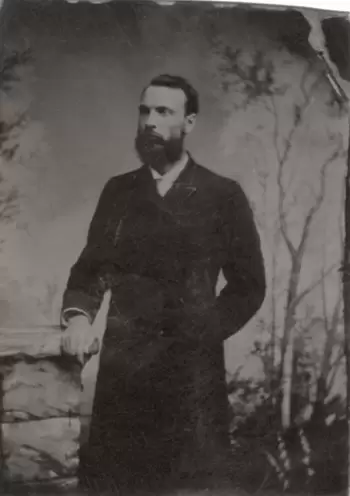
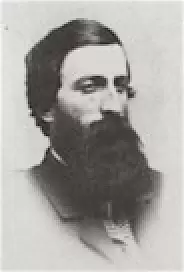
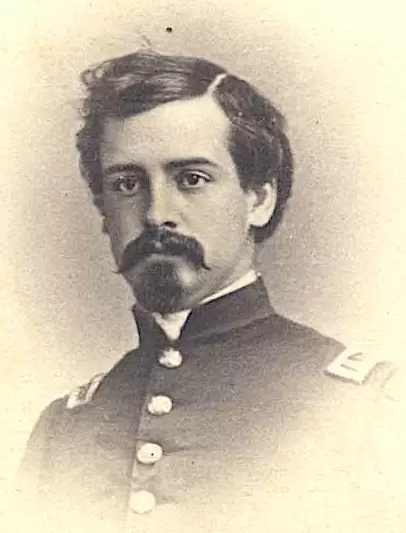
HIDDEN, HENRY B. (1839-1862). Lieutenant, 1st New York Cavalry, Company H. A native New Yorker, he was born into a wealthy family. His maternal great-great grandfather, Thomas Ivers (who also is interred at Green-Wood), was one of the Revolutionary “Tea Partiers” from New York. Hidden was also a brother-in-law of shipbuilder William Webb. As reported in Heroes and Martyrs: Notable Men, by Frank Moore, published in 1862, he was known as a leader; even as a young boy, his teachers would tell him that he had to set an example for others, who were drawn to him.
He was educated at top schools, spent time in a Havana counting house while learning Spanish, then sailed for a year with William Webb to St. Petersburg and other European cities.
During the Civil War, he enlisted at New York City on August 5, 1861, and was immediately commissioned into the 1st New York Cavalry, also known as the Lincoln Cavalry. One biography notes that he was 5′ 10″ tall, graceful and genial in spirit. That biography states that in his six months in camp, he never tired of drill or his “mud-beleaguered quarters.”
On March 9, 1862, with the spring thaw having occurred and the roads now passable, he led his men out of camp and into their first action: a charge of 14 mounted dragoons against 150 Confederate infantry at Sangster’s Station, Virginia. It appears that he and his men were lured into a trap by several Confederates visible in the distance; the rest of the Confederates were hidden nearby. When reinforcements arrived, he was found, face-down with his blood-stained sword in his hand, dead from a gunshot that had entered his back and exited under his chin. Colonel George W. Taylor, 3rd New Jersey Volunteers, wrote about Hidden’s gallantry:
I had under my orders of the First New York Cavalry 16 men and one corporal, under First Lieutenant Hidden. Just before leaving the railroad I ordered this officer to advance in the open fields and reconnoiter, and if the force was not greatly superior to his own he might charge them. He went off at a brisk trot, nor did he check his horses until he charged into the midst of their pickets, the enemy being greatly superior in numbers, and having the advantage of cover of pines. He lost his life in the gallant charge, but drove the enemy into rapid retreat, leaving arms and many knapsacks and blankets. Thirteen prisoners were taken, with a lieutenant and non-commissioned officer. They proved to be the First Maryland Regiment.
Hidden is believed to be the first Army of the Potomac cavalry officer killed in action and the first officer of a Union volunteer cavalry killed in the Civil War. His brother and brother-in-law went to Washington, D.C., to recover and bring back his remains. On March 15, 1862, the officers of the regiment met at Camp Kearny, Virginia, to issue resolutions of condolence for his family. They said of Hidden:
In his death we have lost an esteemed friend, a gallant soldier and a brilliant social companion. While far in advance of the army, attached to a small command for the purpose of ascertaining the location and strength of the enemy, he was called upon to perform extraordinary services and to undergo unusual hardships. He shrank from no emergency, but was only too anxious to be placed where the danger was greatest. When finally brought face to face with an opposing force far superior to his as regards numbers, he did not hesitate a moment, but at the head of fourteen men charged upon one hundred and fifty well-armed infantry, driving them from the field, capturing thirteen prisoners, and utterly dispersing the entire force while cutting his way to the officer commanding the enemy. His brilliant career was ended forever by a single shot which killed him instantly. In the language of his commanding officer, “Lieutenant Hidden has illustrated, in the sacrifice of his life, the whole cavalry service. He has introduced for it a new era.”
The committee resolved that they “sincerely regret that our duties in the field would not permit us to pay his remains that attention which we should otherwise have claimed as our privilege to do.” His desire for good was seen in his regiment, “where the men loved him devotedly, would follow him to the death, and mourned his loss with the bitter tears wrung so hardly from the eyes of stern manhood.”
The day of Henry’s death, his parents received a telegram: “Harry B. Hidden was killed this morning, gallantly fighting for his country.” On March 16, he was eulogized at his funeral as a young man who “was anxious to find an opportunity to tread the path of honor, beset as it might be with dangers.” The 71st Regiment, New York State Militia, Company F, escorted his hearse through Brooklyn, “with its nodding plumes and flag-enshrouded coffin,” to Green-Wood Cemetery. The funeral procession, through thronged streets, included his restive thoroughbred horse “Chance,” upon whom he had ridden into battle, now with “empty saddle and draped spurs.”
His Green-Wood grave is marked by a bronze relief by sculptor Karl Muller. Henry last lived on St. Marks Place in Manhattan. Hidden’s charge inspired two other artists; Victor Nehlig painted An Episode of the War-The Cavalry Charge of Lt. Henry B. Hidden in 1875, a work on display at the New-York Historical Society, and Frank Leslie illustrated the skirmish at Sangster’s Station in The Soldier of Our Civil War in 1893. Section 9, lot 11307.

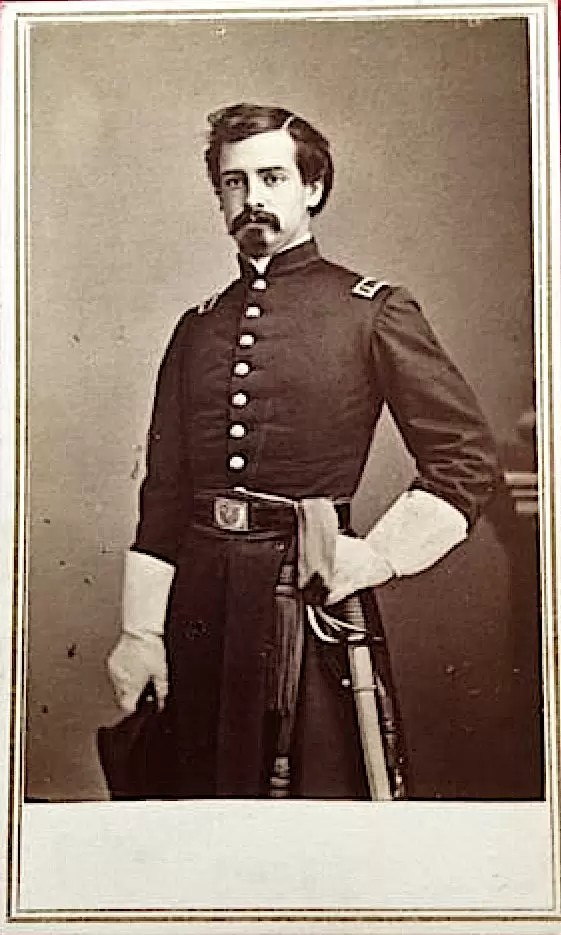
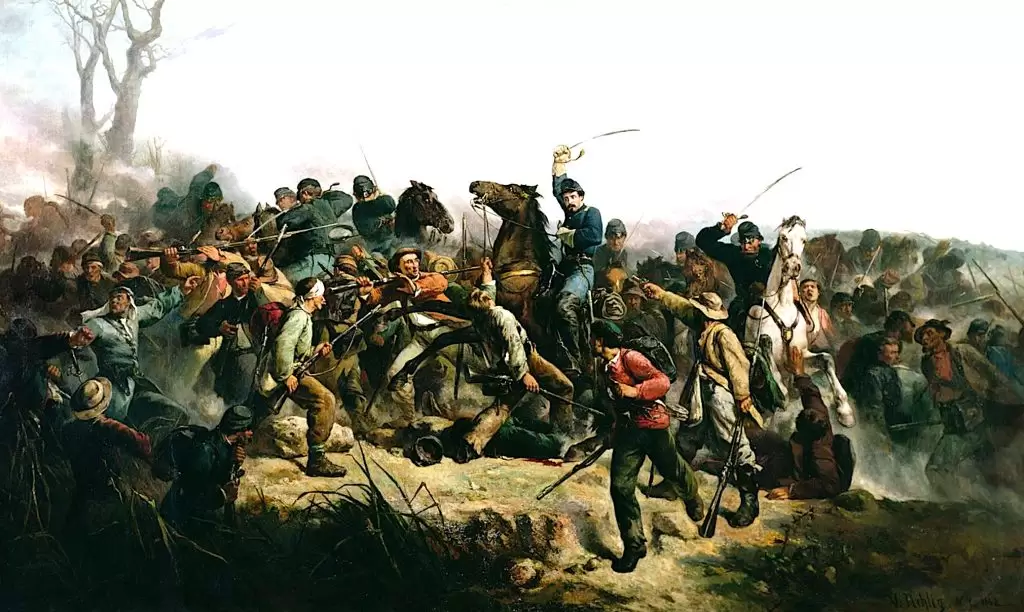
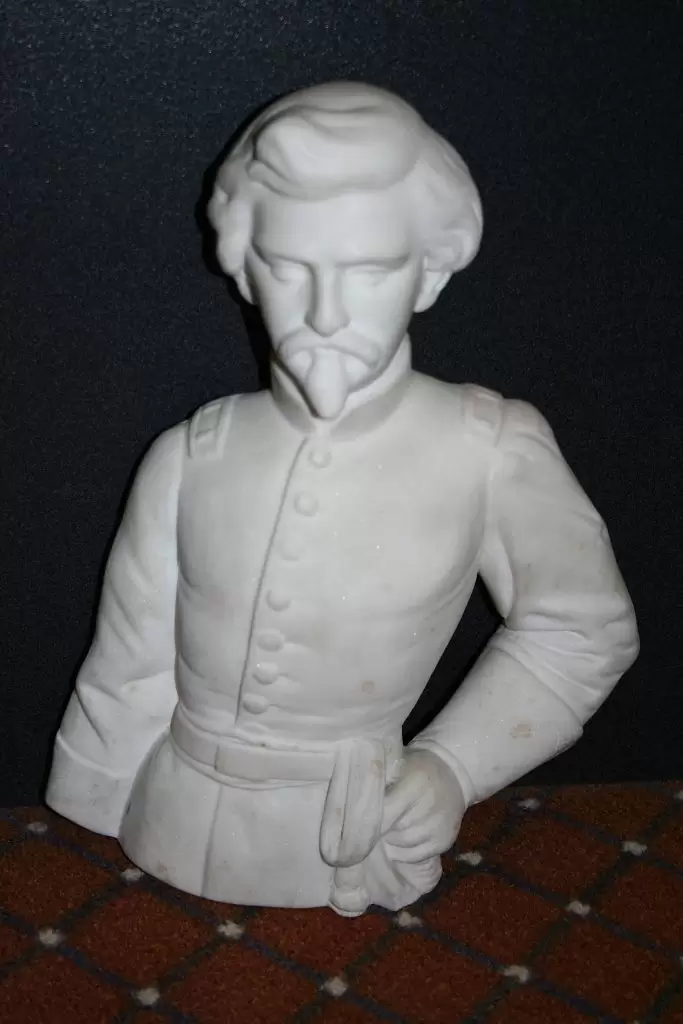
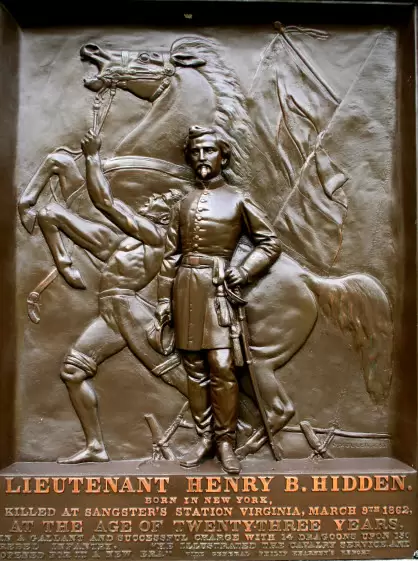
HIGGINBOTHAM (or HIGINBOTHAM, HIGGENBOTHAM), THOMAS H. (1827-1864). Lieutenant colonel, 65th New York Infantry, Company K. Thomas’s birthplace and year of birth are unclear. As per a Draft Registration for a Thomas H. Higinbotham in July 1863, Thomas, a resident of Illinois, was born circa 1825 in Massachusetts. However, a Passenger and Immigration Index shows that a Thomas Higginbotham arrived in Philadelphia, Pennsylvania, from Great Britain and Ireland in 1855; Naturalization Records for New York City report that a Thomas H. Higinbotham, who was living at 125 East 12th Street, became a naturalized citizen on October 17, 1860. Neither document shows that Thomas was in Tiffin, Ohio, where he entered service.
Higginbotham enlisted at Tiffin, Ohio, as a captain, on July 1, 1861, and was commissioned into Company K of the 65th New York, also known as the 1st U.S. Chasseurs, on August 3. Soldiers in Company K of the 65th New York had been recruited from Seneca County, Ohio. After a promotion to major on November 2, 1863, he was transferred to Field and Staff, and later became lieutenant colonel on January 6, 1864. Taken as a prisoner of war on May 10, 1864, at Spotsylvania Court House, Virginia, and confined in Macon, Georgia, Thomas was paroled on August 3, 1864, at Charleston, South Carolina.
Higginbotham was mentioned in the blog, Cemetery Walking (January 1, 2020), that focused on the Chasseurs. The amateur historian who wrote the blog visited cemeteries of its troops and researched the histories of the men to grow closer to them personally. He noted that he had recently discovered a letter of Higginbothams’s in which Thomas expressed his disappointment that the men who had returned to their hometown of Tiffin did not receive an appropriate welcome from their community. This letter was written shortly after September 1864 battles at Opequon Creek (or 3rd Winchester) on September 19 and skirmishes at Fisher’s Hill on September 22. The Chasseurs then participated in Sherman’s move up the Shenandoah Valley in “the Burning,” when the Union Army destroyed thousands of barns, took animals and grain and left the area a wasteland, unable to provide food for General Robert E. lee’s Army of Northern Virginia. This is Thomas’s tribute:
Baltimore, Oct. 3, 1864
Dear B——: I am delayed here on account of our communications with Sheridan being interrupted by guerillas, but intend to leave for Harpers Ferry tonight, and proceed up the valley with a train tomorrow, and hope to gain the Regiment in a few days.
I had hoped to visit Tiffin, and see you before this, thinking that some notice would be taken of the return of my old company, in which case I certainly would have gone out with them. I will not attempt to conceal the fact that I am somewhat hurt to think that the citizens of Tiffin, should so overlook the services of as brave a company as ever left the state of Ohio, or any other State in the Union. They were no hireling soldiers, bought up so much a pound. When the rebellion first broke out, the President called for men to defend the capital, and they responded, not asking how much was the pay, or how much the bounty. What company, or Regiment can show a better record than they? They are an honor to the country and State from which they came. These men patiently endured all the hardships that fall to the lot of a soldier, always looking forward to the day when they would march home in triumph. The bones of their comrades have been left on every field from Fair Oaks to Petersburg, and all who knew them must admit that they did their whole duty. Yet, there was no authorized person to say to them on their return, “we thank you” in the name of your town and county.
I tell you the time will come when they will be honored as they deserve to be. When their backs are bowed by age, and their hair is grey, another generation will point to them and say, he was at Fair Oaks, or Malvern Hill. He fought with McClellan at Antietam, or helped form that living bulwark which rallied back the enemy at Gettysburg. They have seen many other hard fought fields, and never turned their backs to the enemy except at the word of command. The oldest guard of Napoleon might envy them their fame, for they never saw such fields as Spotsylvania and the Wilderness.
I only mention to say what I would have been proud to say in a more public manner, for I know the worth of that little band of veteran heroes.
T.H. Higinbotham
Higginbotham later returned to head his troops and was killed in battle at Cedar Creek, Virginia, on October 19, 1864. Many soldiers from the 65th were injured; there were 90 casualties and 21 dead in this surprise attack against Sheridan’s Army. On November 2, 1864, the New York Daily Herald reported that members of the 65th New York were asked to escort the remains of Thomas H. Higginbotham to his burial site. The men were asked to report to the armory fully uniformed for the procession. On December 15, 1864, his mother, Ann Higinbotham (sic), applied for and received a survivor’s pension, certificate 74,056. The blogger visited Higginbotham’s grave at Green-Wood and noted that a fellow Chasseur, William Willit Tracy (see) is also honored there with a cenotaph. Section 107, lot 15442.
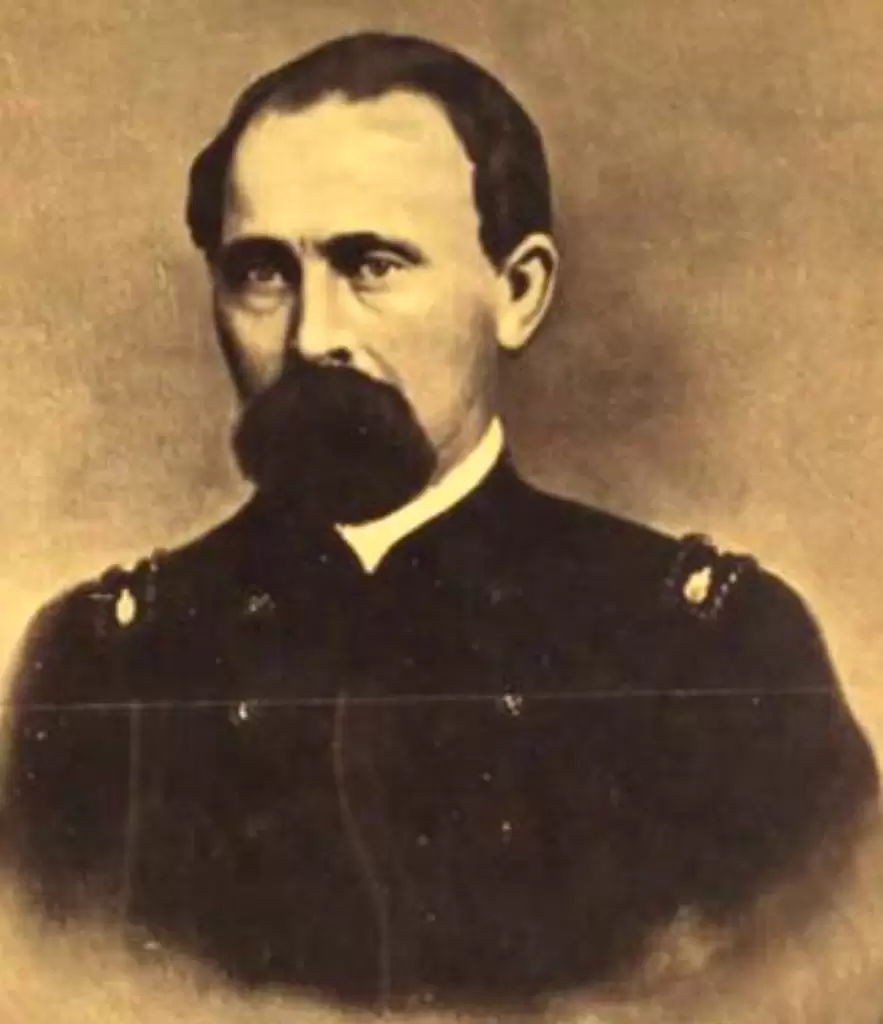
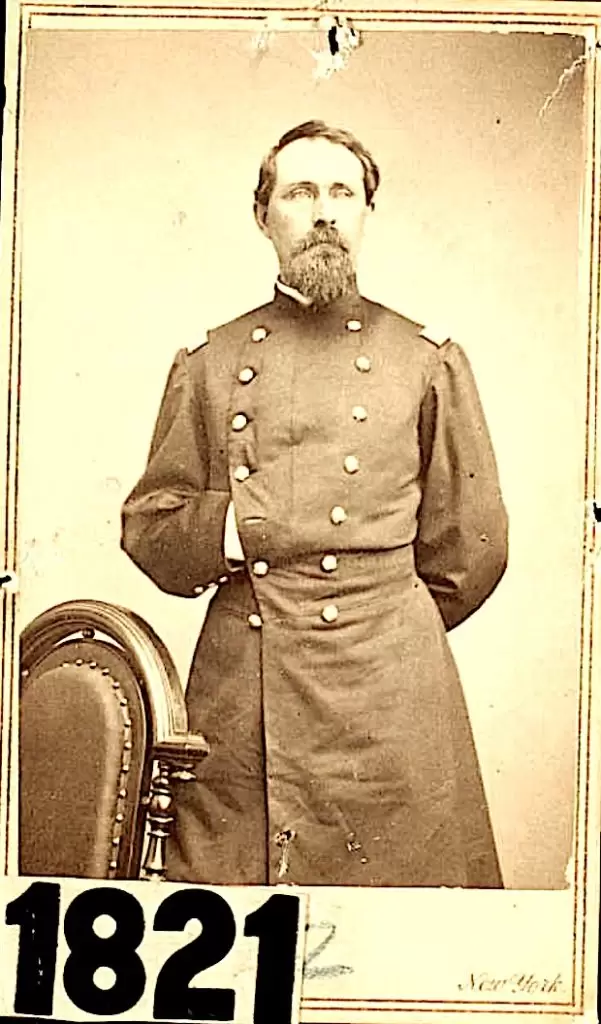
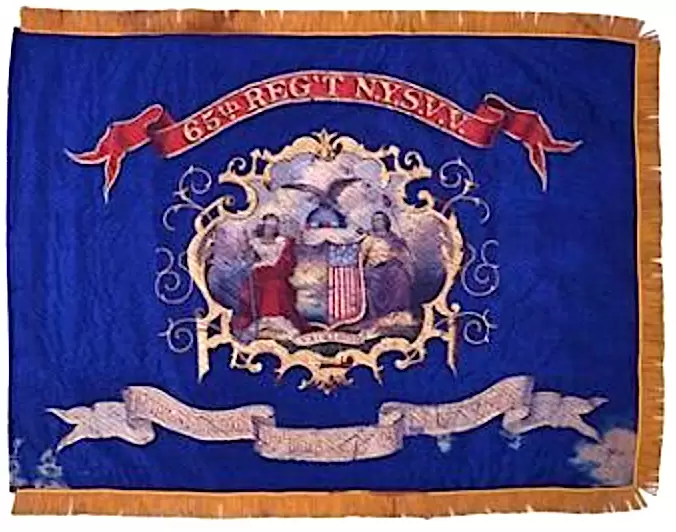
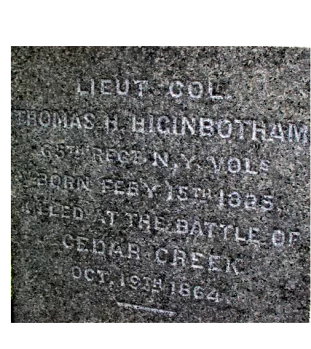
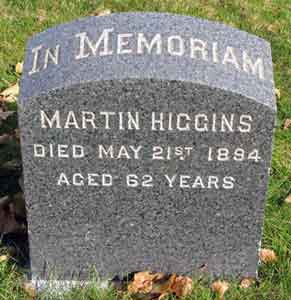
HIGGINS, MARTIN (1832-1894). Private, 5th New York Heavy Artillery, Battery D. After Higgins enlisted as a private at New York City on March 24, 1862, he mustered immediately into Battery D of the 5th New York Heavy Artillery, and deserted on May 22, 1862, at Fort Schuyler, New York Harbor. In civilian life, he was a broker in sugar and molasses and owned property in Brooklyn.
As per an article in the New York Tribune on April 23, 1877, Higgins, in a fit of religious mania, was throwing five dollar bills into a fire on Chatham Street. His obituary notes that he was committed to the Bloomingdale Insane Asylum in 1877. The obituary states that at the time of his death at the Bloomingdale Asylum, the gentleman in charge of his estate had paid $17,000 for his care there and that the $6,000 remaining in his estate would be turned over to the county by the public administrator because there were no relatives and no will. John Cowen, the man in charge of his estate, wrote in an affidavit that Higgins had told him that he was brought up in a charitable institution in New York City, had no knowledge of his parents and no relatives. Section 135, lot 27263, grave 2193.
HIGHAM, CHARLES EDWARD (1838-1909). Private, 8th Regiment, New York State Militia, Company H. A New York City native, Higham served twice in the 8th Regiment, first when he enlisted as a private in 1861 and served for three months. In 1862, he returned to the same company of the 8th Regiment, New York State National Guard, for three months. The 1880 census and a New York City Directory list him in the wood business. In 1899, he applied for and received an invalid pension, certificate 1,014,558. According to his obituary in the New York Herald, he was a member of the Cornelius Vanderbilt Post #136 of the G.A.R., and the New York Council of the Royal Arcanum. His last address was 1420 Boston Road in the Bronx. Josephine Higham, his widow, applied for a pension in 1909, application 925,619, but there is no certificate number. Section 11, lot 10171, grave 9410.
HILDEBRAND, ALEXANDER G. (1840-1902). Landsman, United States Navy. A Brooklynite, Hildebrand was a stage driver according to the census of 1860. He enlisted as a landsman at New York City on the USS North Carolina, a receiving ship, on August 20, 1862. At that time, he listed no occupation and was 5′ 5¼” tall with dark hair, dark eyes and a dark complexion. He first served at the Washington Navy Yard from September 2 through September 16, 1862, then served onboard the USS Arletta, a mortar schooner that was part of the North Atlantic Blockading Squadron, until June 9, 1863. The Arletta delivered munitions to Union ships in the vicinity of Wilmington, North Carolina, during his service on that vessel, then headed for Beaufort, North Carolina, where she was stationed as of June 19, 1863. Subsequently, Hildebrand was on the USS Penobscot until August 3, 1863. He was discharged from the USS North Carolina at the Brooklyn Navy Yard ten days later. Hildebrand’s gravestone confirms his service aboard the USS Penobscot, a steam-operated gunboat that was built in 90 days in Belfast, Maine, delivered to the Navy in January 1862 at Boston, Massachusetts, and assigned to the North Atlantic Blockading Squadron. The Penobscot destroyed the Confederate schooner Sereta off Shallotte Inlet, North Carolina, in June 1862, forced the British ship Pathfinder aground in November of that year, and forced the blockade runner Kate ashore off the Carolina coast in the summer of 1863. The Penobscot was then stationed in the Gulf of Mexico in January 1864 where it joined the blockade off Texas.
As per the census of 1880, Hildebrand was employed as a laborer. His Civil War service is confirmed by the Veterans Census of 1890. In 1893, he applied for an invalid pension from the Navy, citing inability to work due to rheumatism, hemorrhoids, and heart disease. Hildebrand stated that his hemorrhoids and rheumatism first troubled him in 1866. His affidavit stated that he took care of himself, his disabilities were not due to any “vicious” habits and that he was now troubled with kidney disease. Although his initial application, 38,876, was rejected, he ultimately was approved for an invalid pension of $12 a month as of July 20, 1895, certificate 23,239. The census of 1900 lists him as a bartender. William Hildebrand (see), his brother, also served in the Navy during the Civil War. He last lived on Water Street in West Brighton, Staten Island. His death was due to chronic tuberculosis meningitis. Section 50, lot 9072, grave 1.
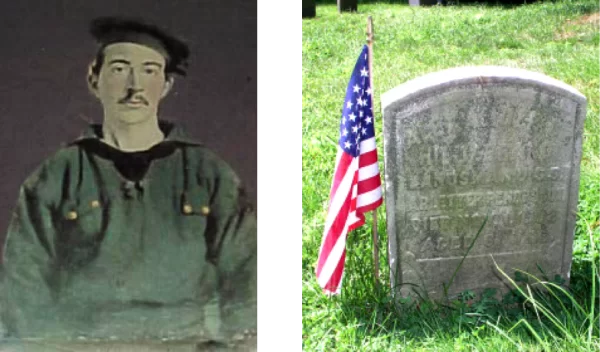
HILDEBRAND (or HILDEBRANT), WILLIAM F. (1839-1916). Landsman, United States Navy. Like his brother Alexander Hildebrand (see), he served as a landsman in the United States Navy. A native of New York, Hildebrand enlisted at New York City on August 15, 1864, on the receiving ship USS Vermont and was then assigned to the mortar schooner USS George Mangham for service in the South Atlantic Blockading Squadron. At that time, he was a teamster who was 5′ 6¼”” tall with hazel eyes, black hair,a dark complexion, and no marks or scars. On April 26, 1865, he was reassigned to the USS Tallapoosa in the East Gulf Blockading Squadron. He was discharged from the USS Ino at the Brooklyn Navy Yard on July 18, 1865, under the name “Hildebrant.”
In 1882, Hildebrand moved to Staten Island from New York City. His service in the Civil War is confirmed by the Veterans Census of 1890. In 1894, his request for an invalid pension from the Navy was granted under certificate 21,223, and noted “disease of the rectum.” Hildebrand declared that he had bleeding piles (hemorrhoids) and kidney disease. He wrote that the piles started bothering him after leaving the Navy in 1865 and continued to trouble him thereafter. He also stated that the disabilities could not be attributed to “any vicious habits of mine.” The doctors reported that one of his two external piles was the size of a hickory nut and the other, the size of a white bean. At the time his pension was first approved, he received $6.00 per month His original pension payment was increased to $8.00 per month in 1904 and indicated “partial inability to earn a support by manual labor.” According to his pension applications in 1907, 1909, and 1912, he had been working as a huckster (peddler). In addition, his pension application noted that he was 5′ 7½” tall and 140 pounds with black and gray hair, black eyes, and had several tattoos including his initials “W.F. H.” and a female pirate on his left forearm, the goddess of liberty on his right arm, and a star and rose on his right hand. As of May 15, 1914, his pension was increased from $19.00 per month (1912) to $22.50 per month. He last lived at 40 Water Street in West New Brighton, Staten Island. His death was attributed to cerebral apoplexy. Section 50, lot 9072.
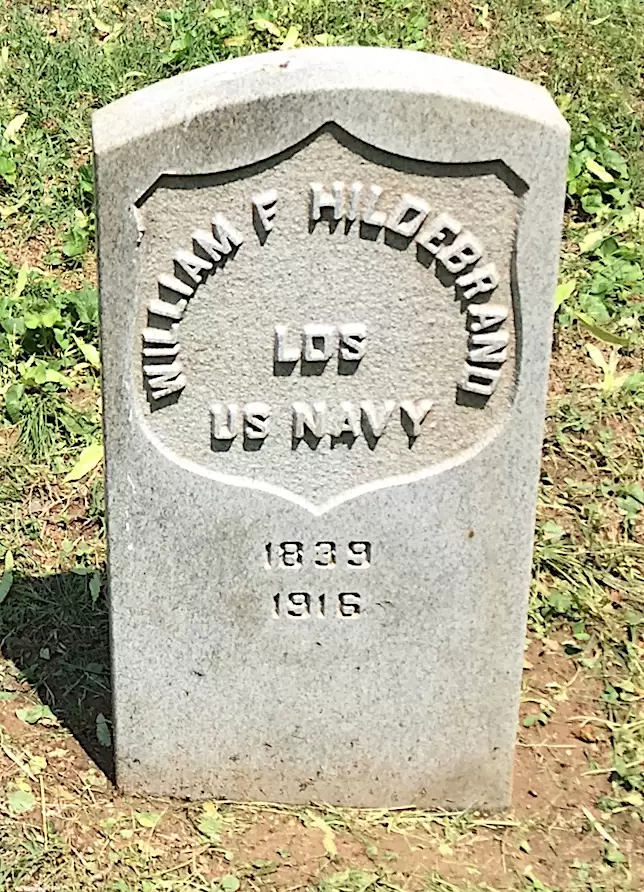
HILL, SYLVESTER (or SILVESTER), C. (1843-1917). Private, 23rd New York State National Guard, Company B. Sylvester C. Hill was the fifth of seven children born to William W. Hill and Sophia Rebecca Brown Hill in Danbury, Fairfield County, Connecticut. According to the 1850 federal census, seven-year-old Silvester and the family had moved to Riverhead, a town in Suffolk County, on the north shore of Long Island, New York. Silvester was registered for school in Riverhead at that time.
As per the National Parks Service Soldiers and Sailors website, and as confirmed by United States pension index cards, Sylvester served in the 23rd New York State National Guard, Company B. The website of the New York State Military Museum describes the 23rd as follows:
This regiment (ten companies) left the State June 18, 1863, commanded by Col. William Everdell Jr. [see] It was mustered in the United States service for thirty days at Harrisburg, where, and in the vicinity of which, it served in the 3d Brigade, 1st Division, Department Susquehanna. It was mustered out at Brooklyn, July 22, 1863.
It participated in the following engagements: June 28th, at Oyster Point, Pa.; July 1, 1863, at Carlisle, Pa.
It should be noted that the service of the 23rd was necessitated by Confederate General Robert E. Lee’s Army of Northern Virginia’s invasion of Pennsylvania. That invasion was met by Major General George Meade’s Army of the Potomac, which was supported by State National Guard units, including the 23rd New York, and culminated in the three-day Battle of Gettysburg (which the 23rd did not participate in).
By the time he was 22 years old, 1865 New York State census records find Sylvester living in Brooklyn, Kings County, New York, with Hester Hicks, age 50, and her daughter, Anne age 13. Sylvester was one of three boarders, including his younger brother, Stanley, and Samuel Taylor, age seven, whose relationship to Hester is not known.
Five years later, according to the 1870 federal census, Sylvester had moved to the Greenpoint/Williamsburg area of Brooklyn and was working as a salesman. He had married 23-year-old Adeline (Addie) Hill. According to the1875 New York State census, William and Addie were still in Brooklyn and had added two children, three-year-old Florence and one-year-old Carrie, to the family. William is described as a “dealer in the millinery industry.”
Addie died in 1890, after having given birth to more children: William Stanley and Adeline R. Marriage Index Records show that Sylvester married Hallie Linn Rogers in July of 1896 in Oshkosh, Wisconsin. The couple soon moved to Brooklyn.
At the turn of the century, the federal census shows 57-year-old Sylvester living with wife Hallie and children Adeline and Carrie as boarders in a twenty-member household in East Orange, Essex County, New Jersey. Sylvester was listed as working in “wholesale milling.”
In 1910, the federal census records 66-year-old Sylvester as living on 12th Street, Manhattan, New York, as a boarder. While Sylvester is noted as married, neither Hallie nor any of the children are recorded among the 17 residents of this household. Sylvester is recorded as a “bookkeeper at a wholesale house.”
Seventy-four-year-old Sylvester died on May 19, 1917, of myocarditis (or heart failure) at Bethany Deaconess Hospital in Brooklyn. A funeral service was held at his son Stanley’s residence in Manhattan. He was interred on May 22, 1917. His widow, Hallie L. Hill, applied in Wisconsin for a federal pension on January 25, 1923; that pension was never certified. Section 151, lot 22824.
HILLBERT (or HELBERG), JOHN JOSEPH (or JAMES) (1843-1910). Private, 1st New York Cavalry, Company F. A native of Germany, he enlisted as a private at New York City on May 14, 1864, and immediately mustered into the 1st New York Cavalry. He was borne on the rolls as James Helberg. According to his soldier records, he was taken as a prisoner of war on March 26, 1865, at White House, Virginia, and paroled four days later at Boulware & Cox’s Wharf. As per his obituary in the Brooklyn Daily Eagle, which confirms his Civil War service, he was confined in Libby Prison for nine months. This, however, seems doubtful; his military records do not indicate such imprisonment. Libby was primarily used as a prison for officers, not enlisted men, and he only served about a year-there does not seem to be a nine-month period during his service when he might have been imprisoned. He mustered out on June 27, 1865, at Alexandria, Virginia.
Hillbert’s obituary indicates that he had been a resident of Brooklyn for fifty years. The obituary also notes that he had been a commercial traveler and subsequently was an inspector in the Brooklyn City Works Department for fourteen years. He was a member of Sumner Post #24 of the G.A.R. and was trustee of the United Presbyterian Church in Cypress Hills. Hillbert last lived at 95 Grant Avenue in Cypress Hills, Brooklyn, where he died from heart failure. According to his will, at the time of his death, his personal property totaled $50. Section J, lot 32827, grave 3.
HILLIARD, JOHN P. (1833-1901). Commissary sergeant, 71st Regiment, New York State National Guard. Hilliard, a native of New York, enlisted and mustered into the 71st National Guard when his unit was called into service on June 17, 1863. Hilliard, a native of New York, enlisted and mustered into the 71st National Guard when his unit was called into service on June 17, 1863. He was discharged with his regiment after 30 days on July 22. The 1880 census and Hilliard’s obituary in the Tribune state that he was a city weigher. As per his obituary in the New York Herald, he was a member of the Lafayette Post #140 of the G.A.R. and the 71st Veteran Association; members of both organizations were invited to his funeral. He last lived at 222 West 22nd Street in Manhattan. Sadly, Margaret P. Hilliard, his wife who was sixty-nine years old and who is interred with him, died the next day, presumably from the shock of her husband’s death. A double funeral was held at Christ Church on Broadway and West 71st Street. Section 46, lot 4378, grave 8.
HILLIARD, WILLIAM PENNINGTON (1816-1870). Private, 8th Regiment, New York State Militia, Company I. A native New Yorker, Hilliard served for three months with the 8th Regiment when it was activated in 1861. His death certificate states that he was employed as a bartender. He last lived in Chatham, New York. As per his obituary, he died suddenly of pneumonia. Section 39, lot 6605.
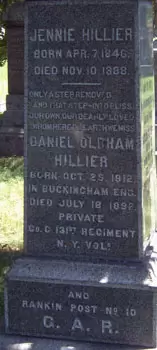
HILLIER, DANIEL O. (1812-1892). Private, 131st New York Infantry, Company C. Originally from Birmingham, England, he immigrated to the United States in 1849 aboard the ship Wellington. During the Civil War, Hillier enlisted on August 26, 1862, at Brooklyn, mustered into the 131st New York on September 6, and mustered out on July 26, 1865, at Savannah, Georgia. He was a member of Rankin Post #10 of the G.A.R. In 1890, his application for an invalid pension was approved, certificate 529,578. The 1892 New York State census indicates that he was living in Brooklyn and was a U.S. citizen. He last lived at 643 Lafayette Avenue in Brooklyn. Bronchitis was the cause of his death. According to the petition pertaining to his last will and testament, he left his children (two daughters and a son) personal property valued at $2,000. Section 147, lot 21996.
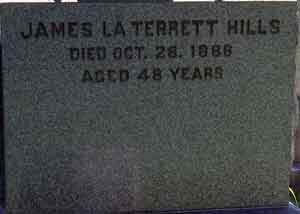
HILLS, JAMES L. (1838-1886). Corporal, 5th New York Infantry, Company D. Hills was born in New York City. At the start of the Civil War, Hills was employed by the United States Marshal’s Office and was also a hatter. He enlisted at New York City as a private on April 25, 1861, and mustered in on May 9. Hills was slightly wounded at Second Bull Run, Virginia, on August 30, 1862. His wounding likely occurred when the 5th was overrun by the Texas Brigade of Longstreet’s Corps. Subsequently, he returned to the regiment in September, was promoted to corporal on November 12, 1862, and mustered out on May 14, 1863, at New York City. As per his death certificate, he was a hatter. He last lived at 317 East 53rd Street in Manhattan. His death was caused by phthisis. Section 147, lot 2184.
HILTON, FREDERICK SHONNARD (1832-1865). Private, 5th New York Infantry, Company A; 146th New York Infantry. Hilton was born in Yonkers, New York. As per his online family tree, he married Harriet Cornelia Andrews in Yonkers on June 15, 1858; the couple had two children, a son, born in 1859, who bore his name, and a daughter, Harriet, born in 1862. As per the 1860 census, he lived with his wife, infant son and his in-laws in Perth Amboy, New Jersey, was a factory superintendent, had real estate valued at $8,000, and a personal estate of $1,200.
As per his muster roll, Hilton enlisted at New York City on August 7, 1862, and mustered immediately into Company A of the 5th New York. He was described as a superintendent who was 5′ 9″ tall with hazel eyes, dark hair and a light complexion. His muster roll notes that he was absent and sick at Perth Amboy, New Jersey, on September 16, 1862, and absent on April 12, 1863. He was transferred to an unknown company of the 146th New York on May 4, 1863.
Hilton died in Yonkers on September 21, 1865, while visiting from Baltimore, Maryland, where he lived and worked aa an agent for the sale of metallic weather strips and window bands for sashes and doors. As per Green-Wood records, his death was attributed to chronic diarrhea, likely contracted while in service. New York’s Evening Post announced his death, noting his roots in Yonkers.
In 1866, Harriet Hilton applied for and received a widow’s pension, certificate 87,852. His will was probated in Kings County on October 22, 1866. His widow noted that he was a resident of Baltimore at the time of his death but was visiting in Yonkers. She stated that the children were minors and that her husband had real estate in Brooklyn and other places and that his estate was valued at under $5,000. In 1877, a minor’s pension was approved for his daughter, Harriet, certificate 180,707. Section 52, lot 8591.
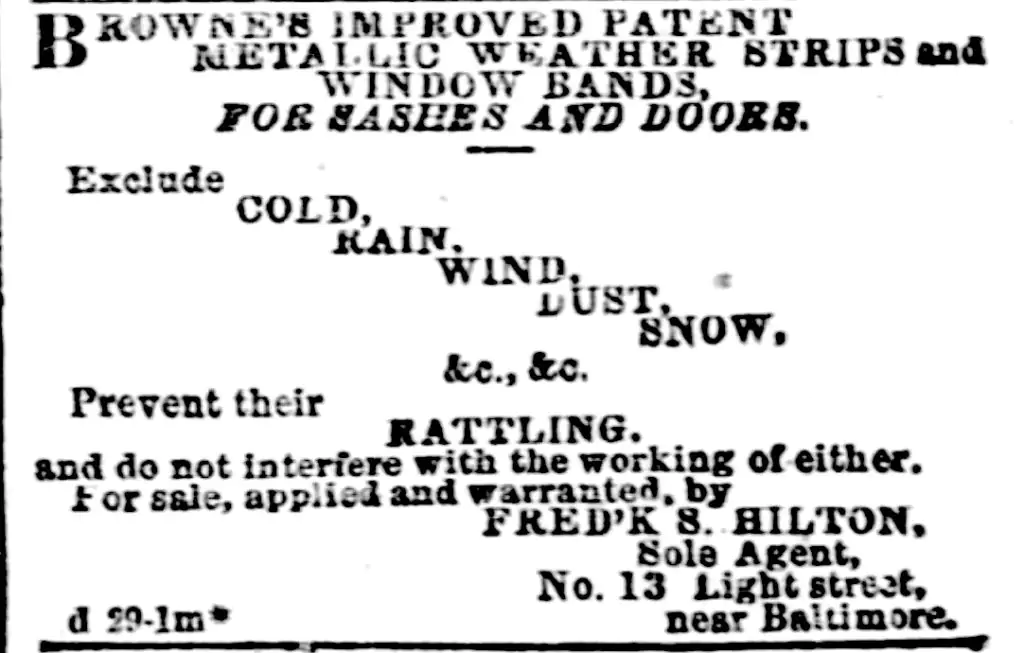
HINCHMAN, JAMES H. (1835-1861). Private, 83rd New York Infantry, Company F. After enlisting on June 20, 1861, at Washington, D.C., and mustering in on that date, he died there about two months later of inflammation of the bowel on August 26, 1861. He was interred on September 3 at Green-Wood. On August 1, 1862, his mother was one of the early applicants for a survivor’s pension, application 1,367; the pension was granted under certificate 204,231. Lot 9895, grave 662.
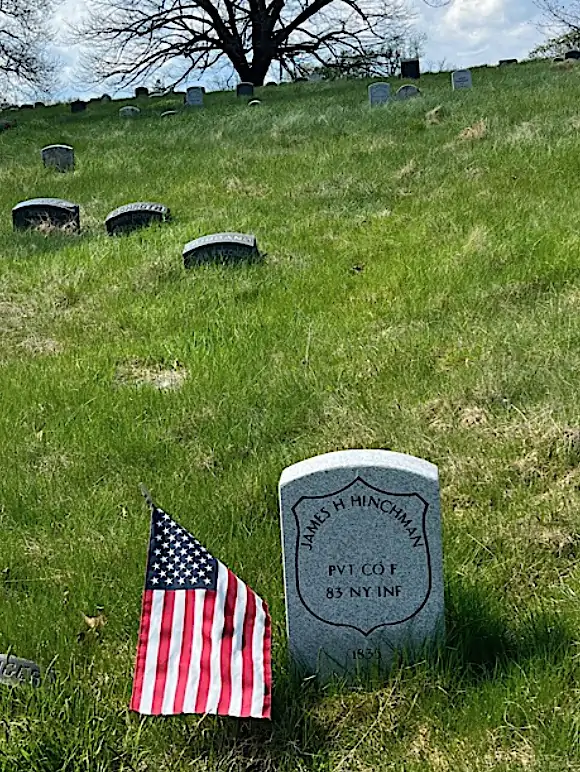
HINCHMAN, JOHN (1843-1883). Corporal, 146th New York Infantry, Company E; private, 5th New York Infantry, Company A. A New York State native, Hinchman enlisted at New York City as a private on July 9, 1861, and mustered into the 5th New York, known familiarly as Duryée’s Zouaves, four days later. On May 4, 1863, he transferred into the 146th New York where he was promoted to corporal at some point before his discharge on July 19, 1864, at Petersburg, Virginia. The 1870 census lists him as a clerk. In 1873, he applied for a invalid pension that was granted under certificate 128,936. His death certificate notes that he was a laborer. As per his obituary, his funeral was held at the home of his brother, William Hinchman (see); members of the 5th Regiment were invited to attend his funeral. He last lived in New York City. He died of phthisis. Section 188, lot 15158.
HINCHMAN (or HUNCHMAN), WILLIAM (1835-1897). Corporal, 119th New York Infantry, Company F; 5th New York Veteran Infantry, Company B. Born in Hyde Park, New York, Hinchman was 5’8″ and a boatman by trade. On July 18, 1862, he enlisted at New York City as a corporal, mustered into the 119th on September 4, and was discharged for disability on January 25, 1863. He re-enlisted as a private at New York City on August 29, 1863, mustered into the 5th Veterans on October 19, and was promoted to corporal on August 5, 1864. On August 19, 1864, he was wounded at Weldon Railroad, Virginia, suffering a fracture to his left ulna and a severe arm injury necessitating the amputation of his arm just below the elbow on September 14. He was discharged for disability on May 17, 1865, at Ward’s Hospital in Philadelphia, Pennsylvania. Hinchman also served in Company E of the 4th New York at some point. He and John Hinchman (see) were brothers. As per his obituary in the New York Tribune, he was a retired grocer who was well-known in his neighborhood. He had been traveling with his son in Niagara Falls a few days before his death, caused by heart disease. His last residence was 20 Grove Street in New York City. Section 188, lot 15158, grave 3.
HINCKEN, EDWARD BOYD (1843-1888). Corporal, 23rd Regiment, New York State National Guard, Company G. A native of New York State, Hincken enlisted as a private and served with the 23rd Regiment for 30 days in 1863. His last residence was 272 Berkeley Place in Brooklyn. He died of Bright’s disease. As per Kings County Estate Files, when his will was probated in January 1894, he owned no real estate but had a personal estate of $15,000. His son, daughter, niece, and two grandsons and two granddaughters were named as heirs to his estate. Two of the grandchildren who were named in the will and were infants when the will was written, did not have access to any of their money until they reached the age of fourteen. Section 103, lot 7661.
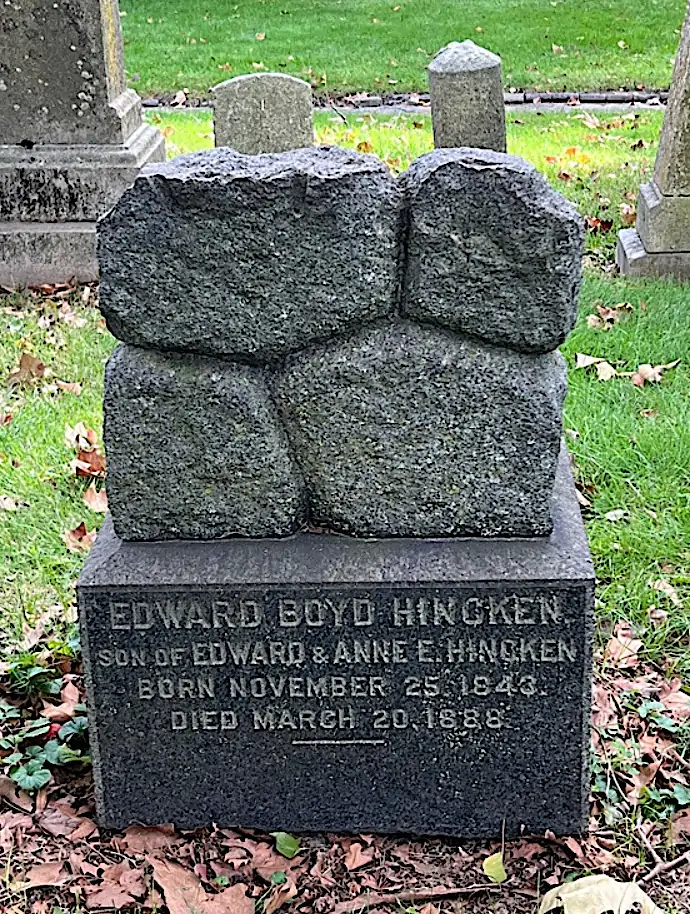
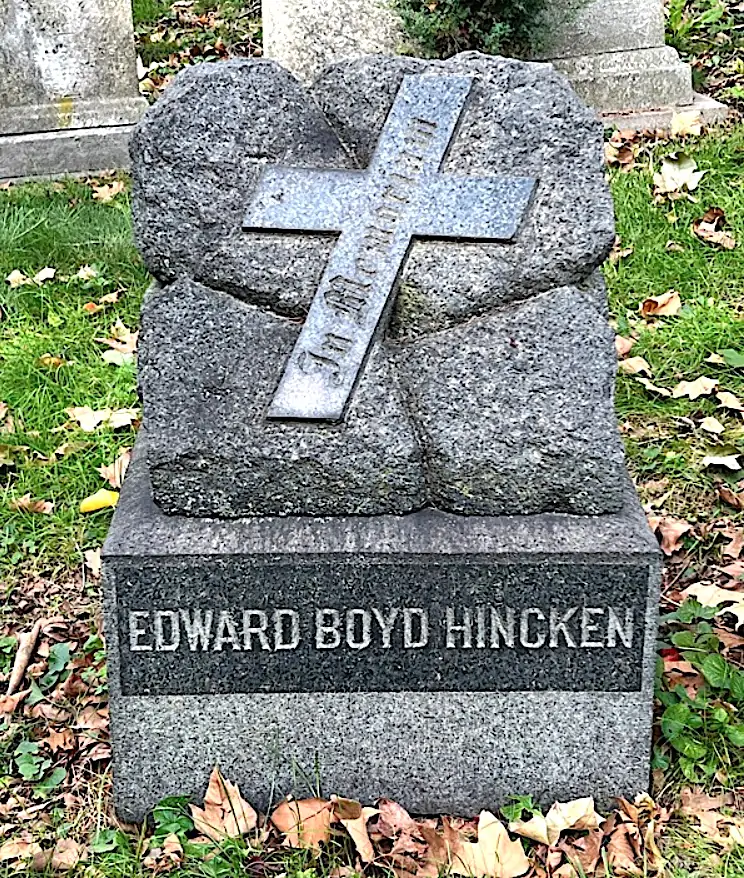
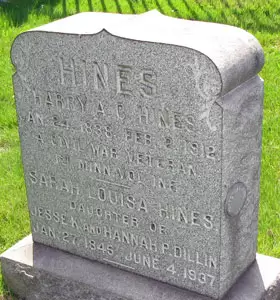
HINES, HENRY C. (1838-1912). Regiment postmaster, 1st Minnesota Infantry, Company A. A native of Brooklyn, New York, he was a farmer in Polk County, Minnesota, in 1860. A year later, he was a bookkeeper and resident of St. Paul. During the Civil War, Hines enlisted as a private on June 24, 1861. He did not travel East with the 1st Minnesota but traveled on his own to meet up with the Regiment and mustered in at Centerville, Virginia, on July 20, 1861, where he became the drummer for Company A. Hines distinguished himself the next day at the Battle of Bull Run. As per a newspaper report from Minnesota, Hines, who was unarmed, was side-tracked and on a by-road when he was stopped by a Confederate trooper from the Virginia Cavalry. After making a motion to shake the cavalryman’s hand, Hines snatched the rebel’s sword, demanded his revolver, and made him dismount. Taken prisoner by Hines, the cavalryman was then turned over to a captain of a nearby regiment.
Hines, who had a background in bookkeeping, was discharged for promotion to regimental postmaster on August 16 of that year. He remained detached as a mail agent for Sedgwick’s Division in October 1862. The St. Paul Daily Union reported on December 10, 1862, that Hines was made postmaster for the Right Grand Division of the Army of the Potomac. On May 24, 1863, the Pioneer Press reported that Hines had returned to Minnesota on the Milwaukee Railroad and was there for a few days. The article noted, “…we are glad to hear he has made a handsome little pile of green backs. Harry has our thanks for a huge bundle of late papers.” Although the date of his discharge is unknown, it is thought to be in May 1863 when he came home and married. He was fortunate to have been discharged before July 2, 1863, when the First Minnesota, badly outnumbered, was sacrificed in order to close a gap in the Union line at Gettysburg. The 1870 census notes that he was living in St. Paul and selling hats and coats. He joined St. Paul’s William Acker G.A.R. Post #21 on May 17, 1870. As per the 1900 census, he was living in Franklin, New Jersey. In 1904, he applied for and received an invalid pension, certificate 1,091,382. Anaemia is listed as the cause of death. Section 192, lot 32886.
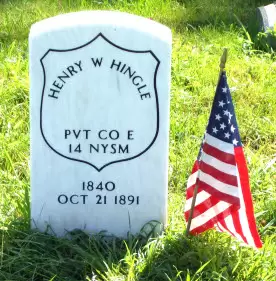
HINGLE, HENRY W. (1840-1891). Private, 84th New York (14th Brooklyn) Infantry, Company E; Veteran Reserve Corps. A Brooklyn native, Hingle enlisted there on April 18, 1861, and mustered into the 14th Brooklyn on May 23. As per his muster roll, he was a clerk who was 5′ 7″ tall with blue eyes, light hair and a light complexion. He was listed as wounded and sick from May 1862 through June 1863. Subsequently, he was on detached service as a clerk at the United States Army General Hospital in Fairfax Seminary, Virginia, in November and December 1863. During his time in service, the 14th fought in Virginia at the Battles of First and Second Bull Run, Fredericksburg and Chancellorsville and at the Battle of Antietam, Maryland. He transferred to Veteran Reserve Corps on July 1, 1863, and to the Invalid Corps on February 15, 1864, from which he mustered out on June 6, 1864, at New York City.
After the Civil War, Hingle worked as a clerk and as a paymaster clerk for the City Railroad. As per his obituary in the Brooklyn Daily Eagle, which notes that he died after a short illness, he was a member of the Fourteenth Veterans’ Association, the Erastus T. Tefft Post #335 of the G.A.R., the Royal Arcanum, and the Capitoline Council of the Order of United Friends. He last lived at 571 Quincy Street, Brooklyn. In 1891, his wife applied for and received a widow’s pension, certificate 351,283. Section 200, lot 26319.
HINMAN, RICHARD H. (1827-1862). Surgeon, 67th New York Infantry. After enlisting as a surgeon on May 14, 1861, at Brooklyn, he was commissioned into the Field and Staff of the 67th New York on June 24, 1861, at Camp Plymouth in New York Harbor. He was hospitalized with malarial fever at Fortress Monroe, Virginia, on April 29, 1862, and advised to go home to restore his health. He died at his home in Brooklyn on May 22, 1862. Although the surgeon’s paperwork indicates that he died from convulsions at the termination of his illness contracted at Yorktown, his obituary notes that he died from malaria and his soldier record states that he died from disease. His home in Brooklyn was at 128 Remsen Street.
Clarissa Hinman applied for and received a widow’s pension of $25.00 per month as of September 15, 1863. Although her pension terminated upon her remarriage in 1866, she reapplied, pursuant to the regulations of the Act of March 3, 1901, after her second husband died. She declared in 1902 that she was unable to find work in the canning establishments in San Jose, California, where she lived and at age 75 was in need of support and re-instatement of her widow’s pension. A note to the Pension Agency states that she died January 3, 1905 and that her pension certificate number was 5,951. Section 78, lot 4556.
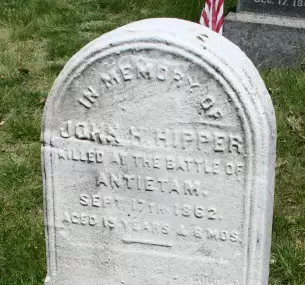
HIPPER, JOHN H. (1843-1862). Private, 3rd Maryland Infantry, Companies I and B. Though there is some indication that he was interred at Antietam National Cemetery, there was only one soldier named John Hipper who died during the Civil War, and it appears likely that he was disinterred and moved from Sharpsburg, Maryland, to Green-Wood Cemetery. (Hipper’s gravestone at Antietam National Cemetery is numbered 2562.) Hipper enlisted as a private at New York on September 15, 1861, for a period of three years, and mustered immediately into Company B of the 3rd Maryland at Williamsport, Maryland. The 3rd Maryland was part of 2nd Brigade, 2nd Division, 12th Corps.
There is some discrepancy as to the actual date and cause of his death. Although some military records indicate that Hipper died at Antietam of disease on September 21, 1862, the company muster roll states that Hipper died on September 23 of wounds received at Antietam; the official casualty sheet also indicates that the cause of casualty was “wounded at Antietam” and lists the date of death as September 21, 1862. Green-Wood Cemetery’s records state that, on September 18, 1862, John Hipper, a soldier, died of wounds received at the Battle of Antietam. Before his enlistment, his last residence was Middagh Street in Brooklyn. He was interred at Green-Wood on January 7, 1863. Hipper’s index card at the New York State Military Museum notes that he has marble headstone on his grave at Green-Wood Cemetery. In 1890, his father applied for a survivor’s pension, application 454,180, but there is no evidence that it was certified. Section 115, lot 13536 (Soldiers’ Lot), grave 56.
HIRLEY (or HURLEY), ORLANDO (or OLIVER) V. (or B.) (1836-1896). Private, 38th New York Infantry, Company I; 17th New York Veterans’ Infantry, Company K. Hirley was born in New York. After Hirley enlisted as a private at Horseheads, New York, on May 21, 1861, he mustered into the 38th New York on June 8. His muster roll indicates that he was paid $8.72 from May 7 to June 3, 1861. On July 21, 1861, he was wounded by Confederate gun fire at the Battle of First Bull Run, Virginia, returned to his regiment in January 1862, and was discharged for disability on May 2, 1862, at Washington, D.C. On May 31, 1862, he applied for and received an invalid pension, certificate 11,698. Hirley re-enlisted as a private at New York City on September 9, 1863, mustered into Company K of the 17th Veteran’s’ Infantry five days later, and was listed as having deserted at Staten Island on October 20 of that year. However, that might not be accurate; another record indicates that he was discharged at Staten Island on that date.
The 1879 New York City Directory reports that he was in the shipping business. He was mentioned in an undated newspaper article that he paid Charles F. Junier, a shipping agent at 49th South Street, fees in excess of those allowed by law to procure berths on the schooner J. Nickerson. His last residence was 1879 Dean Street in Brooklyn; his death was caused by pneumonia. Section 127, lot 8259, grave 179.
HIRSCH, HENRY C. (1831-1868). Private, 178th New York Infantry, Company I. Of German origin, Hirsch enlisted on August 19, 1863, at New York City, as a private. After mustering into the 178th New York on September 3, he deserted two weeks later on September 17 at Camp Sprague, Staten Island. He last lived on Van Brunt Street in Brooklyn. Section D, lot 7078, grave 268.
HIRSCH, JOSEPH (1832-1883). Private, 56th Regiment, New York State National Guard. Hirsch’s birthplace is noted as “United States” on his death certificate; however, he is listed on a passenger list as arriving in New York City from LeHavre, France, on the Helvetia on June 20, 1855, and is listed as being born in Bavaria (Germany) on the 1860 census. In 1865, Hirsch enlisted as a private and served in the 56th National Guard (new organization). Further details of his service are unknown. As per his death certificate, he was an iron molder. His last residence was 175 Sackett Street, Brooklyn. He died of pulmonary congestion. Section 2, lot 5499, grave 1738.
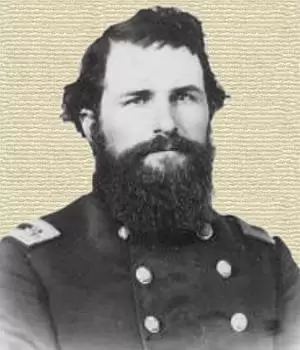
HOAGLAND, CORNELIUS NEVIUS (or NEVENS) (1828-1898). Chief surgeon, Second Brigade; surgeon, 71st Ohio Infantry; first lieutenant, 11th Ohio Infantry, Company H. He was born in Hillsborough Township in Somerset County, New Jersey, into a family descended from an early New Amsterdam settler. His great-grandfather, Christopher Hoagland, was justice of the peace in Somerset County in 1776 and then was a member of the state legislature. Cornelius’s family moved to Ohio in 1834, where they first had a farm and then owned an inn. Cornelius Hoagland attended public schools, studied Latin privately with a tutor, and later studied medicine, graduating from Western Reserve University in 1852. That same year, he married Eliza Morris, the daughter of a judge; the couple had three daughters. He opened his medical practice in Miami County, Ohio. Also interested in politics, he was elected Miami County Auditor in 1854 and 1856.
At the onset of the Civil War, Hoagland enlisted as a second lieutenant on April 22, 1861, was promoted to first lieutenant two days later, and was commissioned into Company H of the 11th Ohio, known as the Lafayette Blues, on April 26, 1861. He was subsequently discharged for promotion on June 17, 1861. On October 28, 1861, he enlisted as a surgeon and mustered into the 71st Ohio Infantry on that date. The regiment, part of the Army of the Tennessee, was first sent to Paducah, Kentucky, then participated in the Battle of Shiloh in Tennessee (also known as the Battle of Pittsburg Landing) in April 1862. He then was detached to Clarksville, Tennessee, and later to Gallatin, Tennessee, where his health suffered. After resigning on September 7, 1863, and restoring his health, he mustered in again on November 11, 1863, and was appointed chief surgeon of the Second Brigade in 1864. At the time of the latter appointment, the Second Brigade, in the Atlanta Campaign, was at the front in Atlanta, Georgia. Hoagland was seriously wounded at the Battle of Nashville, Tennessee, on December 16, 1864, by a Minie-ball shot to the breast. The Second Brigade then wintered at Huntsville, Alabama, before returning to East Tennessee in the spring of 1865. Hoagland mustered out on November 30, 1865. At the time of muster out, the troops were ordered to Columbus, Ohio, where the official discharge took place the first week of January 1866. During his service, he was frequently in charge of major field hospitals.
After the Civil War, he gave up his medical practice, opened a drug store in Fort Wayne, Indiana, with his brother Joseph, and sold baking powder, a venture that became extremely successful. Living in Brooklyn as of 1868, William Ziegler and John H. Seal were brought in as investors in 1873 and the Royal Baking Company was formed. Falling back on his medical training, Cornelius Hoagland developed Hoagland Laboratories at 335 Henry Street in 1887 to investigate bacteriology, medical science, pathology and physiology. According to The Doctor (1887), the laboratory, a crowning achievement of Long Island College Hospital, was the first institution in the United States, equipped and endowed by private means for the sole purpose of original medical research. The five-floor edifice, which opened on October 1, 1888, had an animal laboratory, lecture halls, private research rooms, bacteriological laboratory, photographic rooms, and an office for Dr. Hoagland.
As per one biography, the death of his grandson to diphtheria in 1884 reawakened his medical interests and reinforced his belief that the study of medical bacteriology offered mankind great hope against disease. To the original expenditure of about $100,000 he added an initial endowment of $50,000. (Another endowment of $24,000 was made before his death.) Of the original investment, the following expenditures were made: site, $24,000; building, $56,606.74; cabinetry and furniture, $6,675.19; apparatus, $4,090.17; library, $3,093.09; pavement, $1,064.65; total, $95,529.84. According to Lyman Horace Weeks, editor of Prominent Families of New York, a series of biographies, a bronze memorial plaque on the Henry Street façade of Hoagland’s facility read, “the first laboratory in the United States erected equipped and endowed by private means for the sole purpose of bacteriology.” About 82 students and physicians studied bacteriology there and another 1,360 students, many of whom became practicing physicians, studied histology and pathology.
Concurrent with their wealth in the baking powder business, the Hoagland brothers began purchasing real state on Shelter Island for summer recreation and vacation homes. As per Patricia Shillingburg in her article, The Hoagland Brothers on Shelter Island from 1881 to 1896 (2003), which confirms the brothers’ Civil War service, the two men dominated civic life in the Shelter Island Grove and Camp Meeting Association of the Methodist Episcopal Church, also known as The Prospect. By 1886, they had built substantial homes on a prime location overlooking Greenport Harbor, helped run the aforementioned association and founded the Shelter Island Yacht Club in 1886. Shillingburg notes that Cornelius also was interested in horse racing and that his horse, “Lancewood,” came in third in three races at Greenport Driving Park in August 1885. In 1887, Cornelius, concerned with the growing population of Greenport, founded the Greenport Water Company, to tend to the community’s growing need for water service and fire protection. By 1896, the two had sold their properties on Shelter Island and were no longer a presence there.
Apparently, there were business controversies related to the running of the Royal Baking Powder Company. After Seal, one of the original investors, died in 1886, Joseph Hoagland wanted to sever his ties with Ziegler and buy him out. Ultimately, Ziegler, who sued Joseph Hoagland for unfair business practices, won his suit on appeal in 1889. At the same time, Cornelius and Joseph were quarreling and Cornelius bought the Cleveland Baking Powder Company in 1887, became its president and moved the factory from Albany to Brooklyn where he managed it successfully.
An expert photographer with a specialty in photo-micrography, Cornelius Hoagland’s slides were used by many lecturers. He was a fellow of the Royal Microscopical Society of London, a regent of Long Island College Hospital, and a trustee and director of many financial and benevolent institutions. In addition, he directed the Brooklyn Eye and Ear Hospital, and became a proponent and philanthropist in the kindergarten movement hoping to benefit children at an impressionable age. In addition, he was a director of the People’s Trust Company, the Dime Savings Bank and the Brooklyn Heights Railroad as well as having connections to other corporations and colleges (Syracuse University, Antioch College and Adelphi College). Hoagland was a life member of the American Geographical Society, the New York Genealogical and Biographical Society, and the Long Island Historical Society. He belonged to the Union League, the Ohio Society, and the Oxford, Brooklyn, Down Town Germania and Hamilton Clubs. As per his obituary in the New York Herald, he was a member of the Military Order Loyal Legion United States Commandery, a patriotic fraternal association, whose members were invited to attend his funeral.
As per Schillenburg’s article, his obituary in the Brooklyn Daily Eagle noted, “To few men is it given to carry the burden of large wealth with such gracious usefulness. No more loyal friendship existed anywhere than he had to give, and no more vital interest was entertained in all public concerns than he cherished.” His last residence was 410 Clinton Avenue, Brooklyn. Section 156, lot 20101.
HOAGLAND, JOSEPH CHRISTOFFEL (1841-1899). Unknown rank, Quartermaster and Subsistence Departments, Ohio Regiments. Hoagland was born in Miami, Ohio, the descendant of Dutch families who had settled in Somerset County, New Jersey. His great-grandfather, Christopher Hoagland, was justice of the peace in Somerset County in 1776 and then was a member of the state legislature. Joseph’s family moved to Ohio in 1834, where they first had a farm and then owned an inn. He was the brother of Cornelius Hoagland (see). Joseph was educated in a high school in Troy, Ohio. As per Patricia Shillingburg in her article, The Hoagland Brothers on Shelter Island from 1881 to 1896 (2003), Joseph served in the Union Army as of 1861 mainly in the quartermaster and subsistence departments and was detailed by Ohio’s Governor Tod for special service at Camp Chase in Columbus, Ohio.
After the Civil War, he married Caroline Matlack of Dayton, Ohio; the couple had three children. Embarking in business with his brother, the two opened a drug store in Fort Wayne, Indiana, and sold baking powder, a venture that became extremely successful. Living in Brooklyn as of 1868, Joseph and his brother brought William Ziegler and Jon H. Seal in as investors in 1873 and the Royal Baking Company was formed. Joseph took much pride in the success of his company noting that after sinking $500,000 a year into advertising, an enormous sum at that time, customers were willing to pay more for his product. He excelled at marketing, used logos like “absolutely” pure, was a hit with bakers and became one of the “kings” of the New York business world. (By the end of the 19th century, the brand was on six continents; it is still sold today.)
Concomitant with their wealth in the baking powder business, the Hoagland brothers began purchasing real estate on Shelter Island for summer recreation and vacation homes. As per Patricia Shillingburg, the two men dominated civic life in the Shelter Island Grove and Camp Meeting Association of the Methodist Episcopal Church, also known as The Prospect. Shillingburg notes that Joseph became president of the board of that organization in 1881 and held that office until 1889. He owned a large yacht, the “Day Dream” and also the “Lagonda,” which welcomed the French vessel, the “Isere,” which brought the Statue of Liberty to New York Harbor in 1885. Hoagland later welcomed Auguste Bartholdi, the sculptor of the Statue at a huge party at the Hamilton Club in Brooklyn at the corner of Remsen and Clinton Streets. By 1886, the brothers had built substantial homes on a prime location overlooking Greenport Harbor, helped run the aforementioned association, and founded the Shelter Island Yacht Club that same year. In 1896, the two had sold their properties on Shelter Island and were no longer a presence there.
Apparently, there were business controversies related to the running of the Royal Baking Powder Company. After Seal, one of the original investors, died in 1886, Joseph Hoagland wanted to sever his ties with Ziegler and buy him out. Ultimately, after an acrimonious dispute, Ziegler, who sued Joseph Hoagland for unfair business practices, won his case on appeal in 1889. At the same time, Cornelius and Joseph were quarreling and Cornelius bought the Cleveland Baking Powder Company in 1887, became its president and moved its factory from Albany to Brooklyn where he managed it successfully.
By 1895, Joseph was the sole owner of the Royal Baker Powder Company with a trademark valued at $10,000,000. He was also president of the New York Tartar Company, whose baking product was related to his brand. He belonged to the Chamber of Commerce, Holland Society, Down Town and Hamilton Clubs as well as the Atlantic and New York Yacht Clubs. In addition to his Brooklyn residence, he had a summer residence, “the Auldwood,” on the Shrewsbury River in Sea Bright, New Jersey. He died in Manhattan. Hoagland’s death was attributed to kidney failure. Section 80, lot 17341.
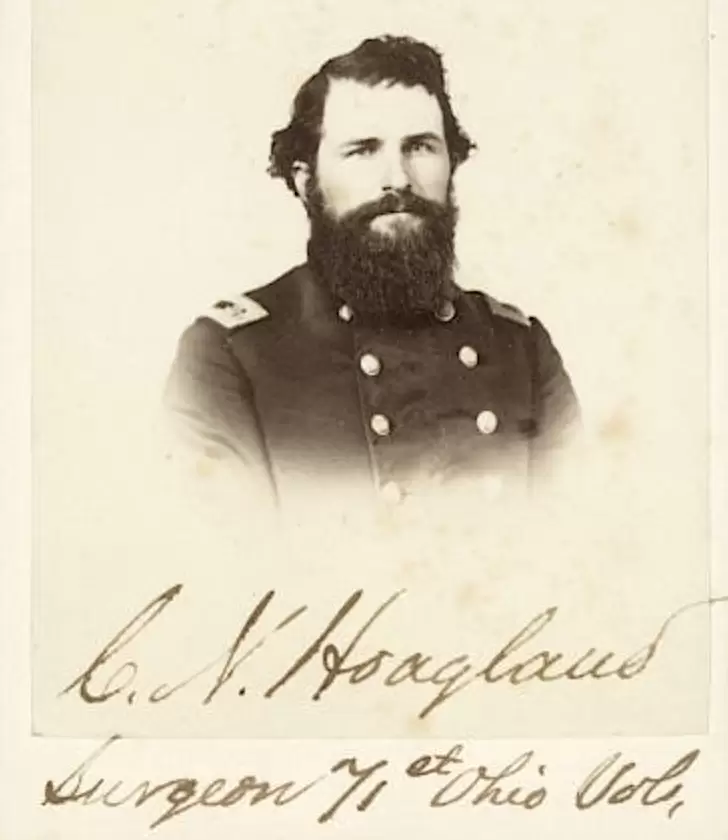
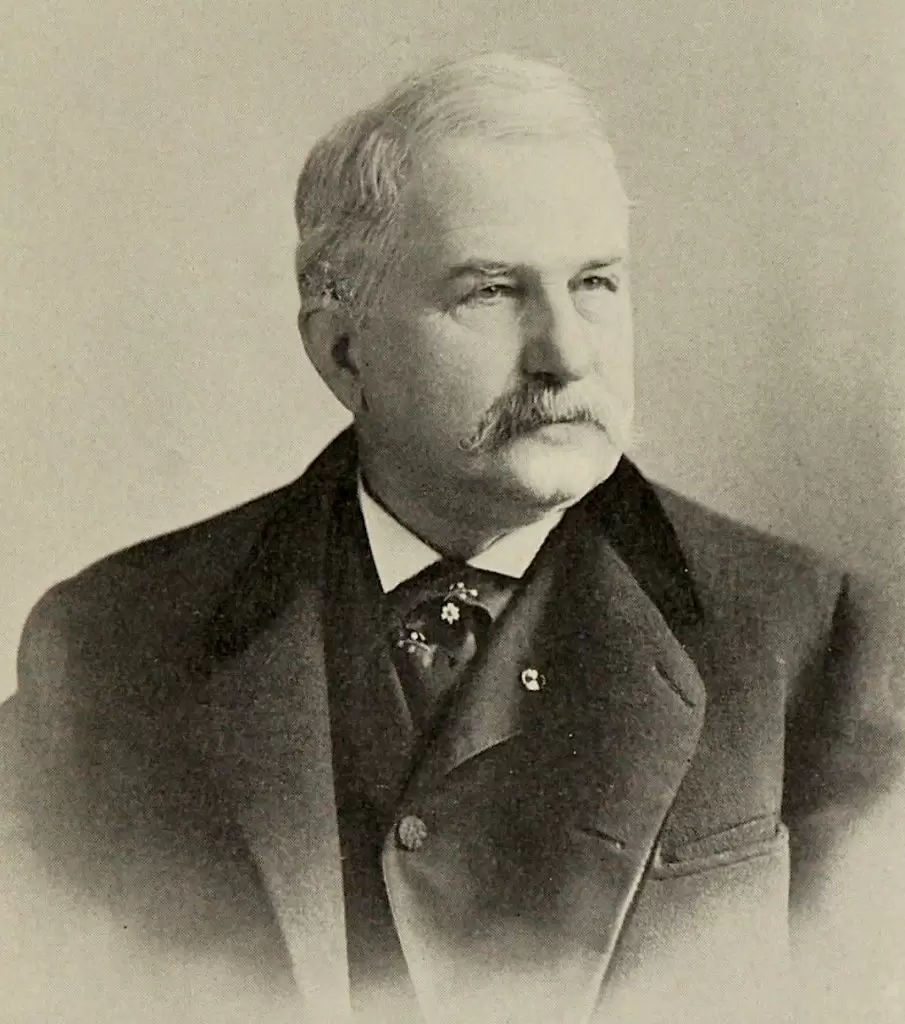
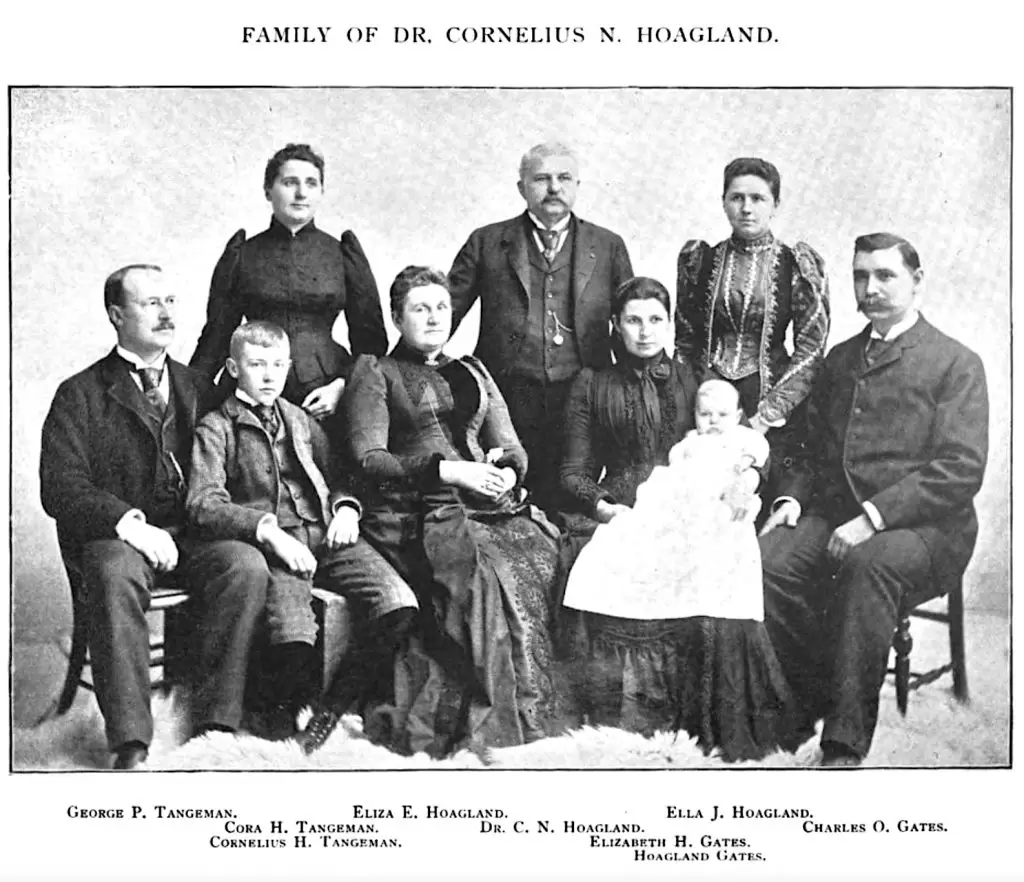
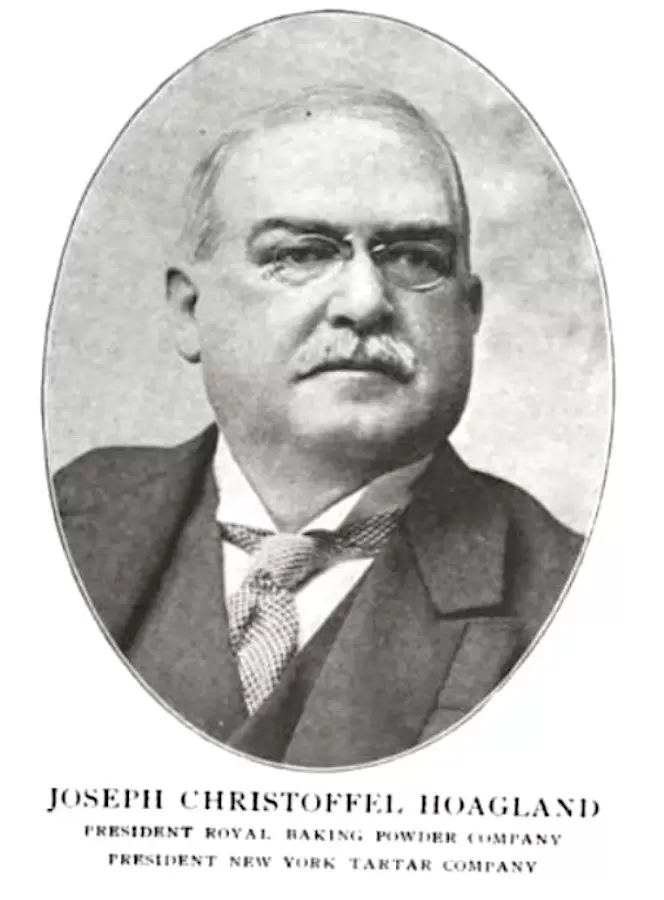
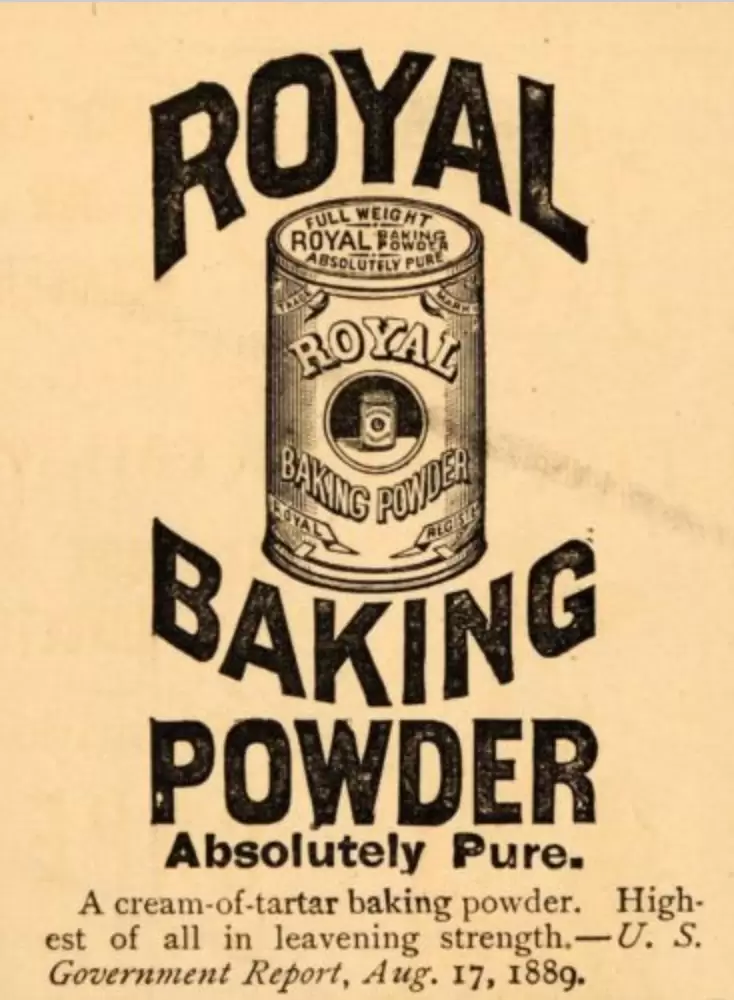

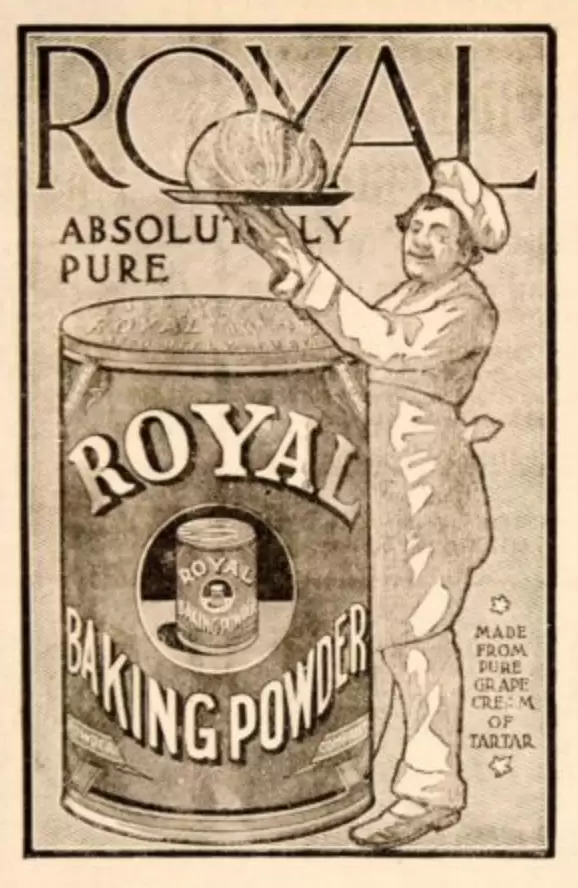
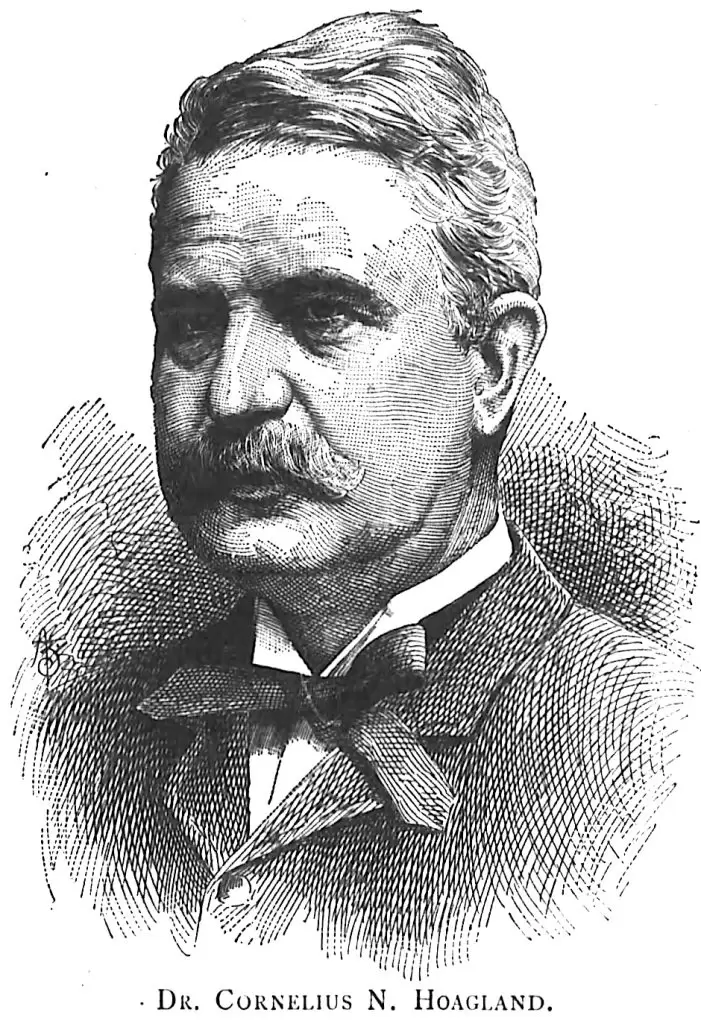
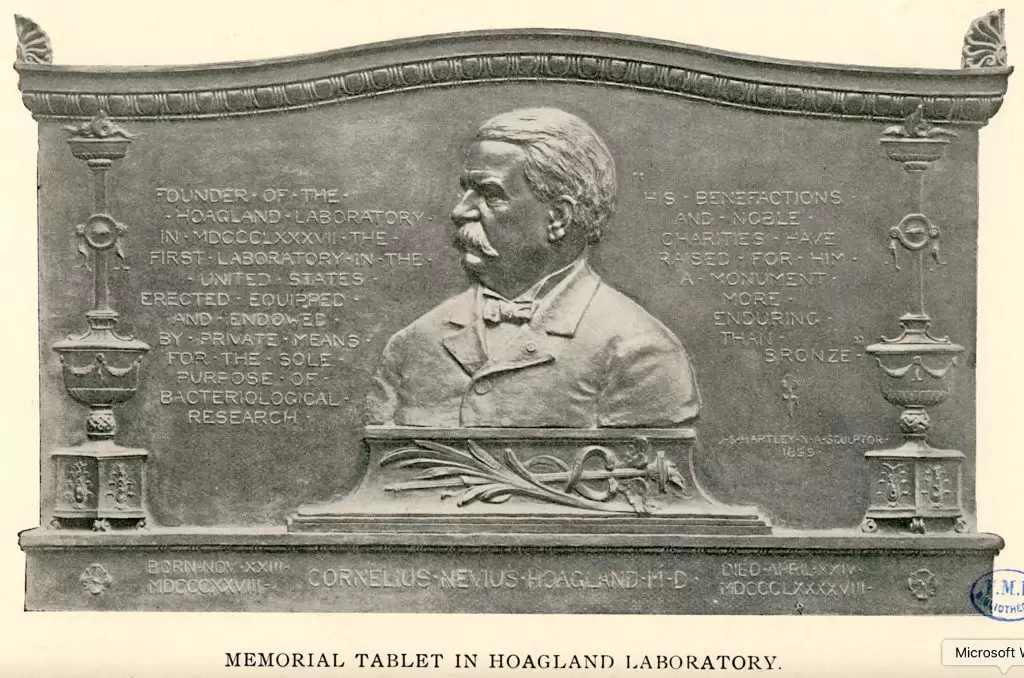
HOAGLAND (or HOOGLAND), WILLIAM H. (1832-1862). Captain, 12th New York Infantry, Company D; second lieutenant, 12th Regiment, New York State Militia, Company A. Originally interred at Green-Wood, Hoagland’s remains were removed from the cemetery on June 2, 1863. A native New Yorker, he enrolled there on April 19, 1861, to serve for three months and mustered into Company A of the 12th New York State Militia on May 2 as a “second second lieutenant.” Also borne on the rolls as William H. Hoogland, he was promoted to second lieutenant on June 5, (although another document indicates that this promotion was to first lieutenant), and mustered out with his company at New York City on August 5. Hoagland re-enlisted at New York City as a captain on November 19, 1861, and mustered in on January 20, 1862, to serve for three years. He was commissioned as captain of the Company D of the 12th New York Infantry on February 27, with rank from February 3, and was killed in action at Fredericksburg, Virginia, on December 13, 1862. Interment at Green-Wood was on December 26, 1862.
HODGE (or HODGES), WILLIAM ALEXANDER (1837-1885). Private, 84th New York (14th Brooklyn) Infantry, Company I; 1st Division, 1st Army Headquarters; ordnance clerk, 5th Army Corps; 5th New York Veterans Infantry, Company G. Hodge was born in Ireland. At the time of the 1855 New York State census, he lived in Brooklyn with his parents and siblings, all of whom were Irish-born and who immigrated to the United States in 1844. Craig Heberton IV researched Hodge’s life, career as a photographer, and Civil War service; his report was published in December 2022, as the cover story in Battlefield Photographer, the Journal of the Center for Civil War Photography (Volume XX, Issue 3), in an article entitled, “William A. Hodge: The Man in the Tam o’Shanter.” The piece shed light on Hodge’s previously unknown work during the Civil War. The details of Hodge’s experiences, as related by Heberton, form the basis of this biography.
Heberton notes that Hodge was listed as a “daguerreotypist” in the 1857-1858 Brooklyn Directory. (Dauguerrotypes were the first successful commercial photography images.) As per the 1858-1859 New York City Directory, he was a camera operator working at 233 Broadway Avenue with the prominent Meade Brothers. At the time of the 1860 census, he was in the daguerrotype industry.
During the Civil War, Hodge enlisted as a private at Brooklyn on June 30, 1861, and mustered into Company I of the 84th New York, familiarly known as the 14th Brooklyn, on August 1. He was detailed to the non-combat Labor Corps on September 1. On November 18, 1861, he was detailed to the Balloon Corps, was on furlough as of January 28, 1862, when his father, an undertaker, fractured his arm, and returned to the corps in the spring after he extended his 14-day absence. On June 26, 1862, when Hodge’s father was living in New Jersey, a state official wrote to Thaddeus S. C. Lowe, the head of the Balloon Corps, stating that William was being paid 40 cents a day while others who had the same skills were reimbursed $3.20 to $5 per day, and that his father and sisters were somewhat dependent on him. Hodge was described as one of three mechanics in the Balloon Corps on January 1, 1863.
As per Heberton, Hodge was recommended for the Balloon Corps by his superiors because of his artistic ability and photography skills, making him capable of making maps of the surrounding terrain and enemy positions, an important function of the corps. Maps created through aerial surveillance were distributed to staff officers and commanders as troops approached Richmond and near Yorktown, on the Chickahominy River. Heberton postulates that through Hodge’s map-making aptitude, he came in contact with assistants of the renowned Civil War photographer, Matthew Brady. Heberton also connects a photo of Hodge owned by his great-great granddaughter showing Hodge with deep-set eyes, bushy brows, a cleft chin, long thin nose and small ears covered with poufy hair, to a musket-toting assistant accompanying Brady’s assistants in Manassas, Virginia, in March 1862, the same time the 14th was in the area. Hodge was on the muster rolls of the Balloon Corps in April, May and June of 1863, when he was stationed in Washington, D.C. He returned to the 14th Brooklyn in the summer of 1863.
As per Heberton, a photo, which is the highlight of the article, including and identifying Hodge wearing a tam, was taken at a photographer’s camp of the Army of the Potomac in October 1862, shortly after the Battle of Antietam. That photo was taken in Berlin (now Brunswick), Maryland. A handwritten notation on the half-stereo albumen print which identifies him as “Hodges” also identifies Matthew Brady, three other photography assistants and two African Americans, a cook and a teamster. The photo also shows photographic equipment and materials. That image is now housed at the Smithsonian’s National Portrait Gallery. As per Heberton, the Balloon Corps arrived near Antietam four days after that battle. This would place Hodge near the site where Brady was photographed with him, as cited above. Heberton and his assistant searched genealogical information, and confirmed Hodge’s identity through his great-great granddaughter, Edith Smith, who had other photos of her ancestor.
Heberton notes that he found 12 photos, mostly from 1862, showing Hodge with Brady’s photographers. He also includes photos in the article that Smith possesses. In one photo in his article, Hodge is sitting on a box of photographic plates with a notation on the back written by Smith’s great-great grandmother, “Your father & his work/cook [?] near the Potomac 1863.” Smith’s grandmother added in red ink, “Civil War photographer.” In addition, Heberton emphasizes the connection between photography and balloon reconnaissance at the time of the photos.
When the Balloon Corps was disbanded in 1863 after Major General George McClellan was removed from command, Hodge was detailed on September 5, 1863, to the 1st Division, 1st Army Headquarters until his transfer to the Ordnance Department 5th Army Corps on April 30, 1864, where he served as an ordnance clerk. He then was transferred to Company G of the 5th New York Veterans, on June 2, 1864, until his honorable discharge on July 2, 1864. Heberton indicates that the Army’s register of approved sutlers and other civilians for 1865 names Hodge as the photographic assistant to C. Glenn, the official photographer of the 2nd Division of the 5th Army.
Hodge returned to studio work after the war. His marriage certificate of January 3, 1867, reports that he was an “artist” residing in New York City. The 1870 census notes that Hodge was living in Brooklyn with his wife and young daughter. At that time, he was employed as a photographer; the couple subsequently had a son. He was also listed as a photographer in the 1872 Brooklyn Directory working at 363 Broadway Avenue with Abraham Bogardus. Subsequently, Hodge was listed in the 1875 and 1879 Brooklyn Directories; the latter directory shows a home address at 116 Hoyt Street. Heberton notes that Hodge was listed in the 1880 Easton, Pennsylvania Directory with his wife incorrectly identified as deceased.
Hodge died of consumption at the House of Rest in New York City. As per Heberton, Annie E. Hodge applied for a widow’s pension on November 17, 1891, attaching a death certificate and stating that he suffered his first pulmonary attack two years before his death. Heberton adds that Annie supported her application with other documents that showed that her husband continued to serve in the 14th New York State National Guard until his discharge on July 11, 1873 and had been elected treasurer of Company I as per the January 1, 1870 Brooklyn Daily Eagle. Section 186, lot 18541.

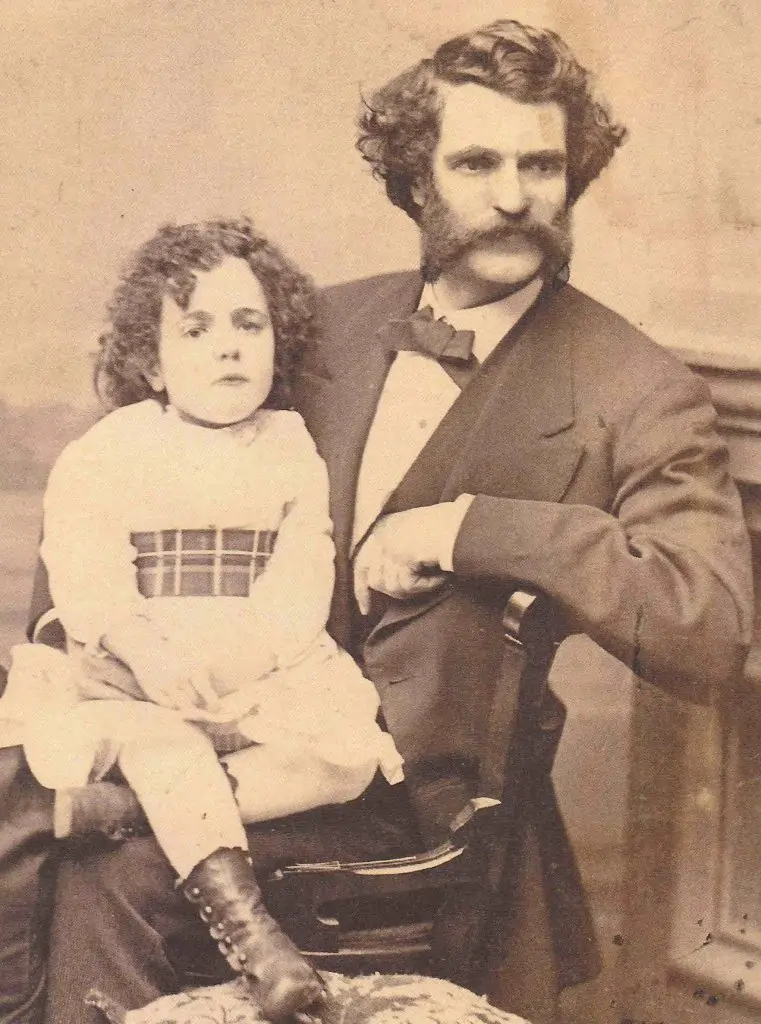
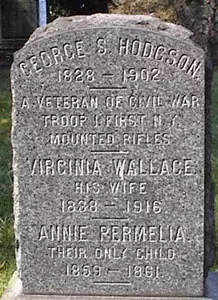
HODGSON, GEORGE S. (1828-1902). Private, 1st New York Mounted Rifles, Company I. Hodgson enlisted at Southfield, New York, on September 2, 1862, and immediately mustered into the 1st New York Mounted Rifles. He was 5′ 5″ tall and had blue eyes, brown hair, and a fair complexion. He had a tattoo, “G.S.W.,” on his left bicep. In 1863, he suffered a hernia when, while on patrol in North Carolina, he and his horse fell at least 15 feet off a rise. Hodgson mustered out on June 12, 1865, at Richmond, Virginia. In 1891, he applied for and received an invalid pension, certificate 988,373. He resided at 1060 Amsterdam Avenue in Manhattan, but spent the end of his life in the Home for Old Men and Aged Couples in Manhattan where he died of a homorrhage. He is interred in the same lot as his father-in-law Michael Wallace (see). His widow, Virginia Hodgson, received a pension in 1902, certificate 533,223. Section 62, lot 2223.
HODGSON, RICHARD M. (1837-1889). Second assistant engineer, United States Navy. Hodgson was born in Pottsville, Pennsylvania. During the Civil War, Hodgson enlisted in the United States Navy on December 9, 1861, at Philadelphia, Pennsylvania, was appointed to the rank of third assistant engineer that day and ordered to the USS Oneida on January 7, 1862. During his duty, the USS Oneida participated in the West Gulf Blockading Squadron under Admiral David Farragut. On April 24, 1862, the ship joined in the attacks on Forts Jackson and St. Philip below New Orleans, Louisiana, drove off the Confederate ram that sank the USS Varuna, and destroyed the CSS Governor Moore. During the ensuing Vicksburg Campaign, Hodgson was injured in the left calf by a shell at Vicksburg, Mississippi, on June 28, 1862, and then transported to Cairo, Illinois. The medical report indicated a line of duty injury noting an extensive lacerated wound to the integument (skin and underlying areas) of the calf when he was struck by a piece of shell. Hodgson was a patient at Moline City Hospital (Illinois) from July 7, 1862, until September 1, 1862; he was on crutches until April 1863. He was promoted to second assistant engineer on September 8, 1863, and assigned to the USS Shenandoah on May 28, 1863. On August 10, 1863, he was detached from the Shenandoah on recommendation of the Medical Department because he was not fit “for active duty at sea.” Subsequently, he was assigned to the USS Pembina on October 6, 1863. He tendered his resignation on January 6, 1866, at Washington, D.C. His resignation was officially accepted on December 21, 1868.
Hodgson applied for and received a pension from the Navy, certificate, 1,102, as of February 19, 1868, retroactive to January 6, 1866, at the rate of $6.66 per month, noting a shell wound to the left leg. The Surgeon’s Report of May 28, 1870, stated that there was tissue damage, impaired muscular action, and locomotor damage that is “one half and permanent.” At that time, he was 5′ 8½” tall and 170 pounds. On January 24, 1876, he wrote in an affidavit to the Pension Bureau claiming that he was entitled to an increase because he could not pursue his profession as a land surveyor because of his disability. Hodgson attested that he could not put his left heel on the ground without great pain and could not stand or walk for a long time without great pain. His pension was increased $4.00 per month in June 1888. His death certificate indicates the cause of death as mania a potu (madness from drinking). His last residence was 31 Washington Street in Hoboken, New Jersey. Fannie Hodgson, his wife, eventually received a widow’s pension from the Navy, certificate 5467, after her first claim in 1890 was rejected because her husband died of a disease not due to his military service. General William Tecumseh Sherman wrote a letter to the Pension Bureau asking that Fannie Hodgson’s claim should be investigated to see whether she had remarried or been without means of support after her husband’s death. A Navy comrade testified in an affidavit that Hodgson’s calf injury left him permanently disabled. Section 67, lot 1812.
HOE, WILLIAM ALBERT (1841-1912). Private, 7th Regiment, New York State National Guard, Company H. A New York native, Hoe enlisted on June 17, 1863, and mustered into Company H of the 7th Regiment for its 30-day activation that year. On April 26, 1883, he mustered into Lafayette Post #140 of the G.A.R.; he listed his occupation as builder. The William A. Hoe, Jr., Engineering Prize was established at New York University in memory of Hoe’s son who graduated from the school in 1888; Hoe’s son, who is interred with him, died in 1897. A fund of $1,000 was established to award a civil engineering graduate who did the best work in sanitary investigation. As per his obituary, he was president of James C. Hoe’s Sons Company and third vice president and trustee of the Bank for Savings in New York. Hoe’s obituary in The New York Times notes that his large carpentry business, which was started by his late father and which bore his father’s name, was located at 52 Gansevoort Street and 6 Liberty Street in Manhattan. He last lived at 123 West 76th Street in Manhattan. He died at Lake Mohonk in New Paltz, New York, where he had a summer home. His death was attributed to an intestinal obstruction. Section 157, lot 25023.
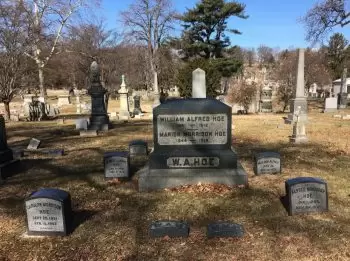
HOEHN, GEORGE (1839-1900). Private, 20th New York Infantry, Companies I and C. Of German origin, Hoehn enlisted at Williamsburg, Brooklyn, as a private on May 3, 1861, and mustered into Company I of the 20th New York three days later. At some point he was transferred intra-regimentally to Company C before he mustered out on June 1, 1863, at New York City. A member of Cushing Post #231 of the G.A.R. as of April 15, 1889, his name was listed on the organization’s mortuary table for 1901. As per his obituary, he had been an attaché of the Butler Street (Brooklyn) police court for fifteen years, having last served as its complaint clerk. Hoehn’s obituary notes his G.A.R. membership and his membership in Prosperity Lodge of the Knights and Ladies of Honor, and in the Veterans of the 20th Regiment; members of those organizations were invited to attend his funeral. His last residence was 33 Windsor Place, Brooklyn, where he died from pneumonia. His widow, Margaretha, who is interred with him, filed for a pension shortly after his death in 1900, certificate 521,295. Hoehn, who died without a will, had personal property of a value that was less than $150. Section 200, lot 29130, grave 2.
HOEY, JOHN (1830-1893). Private, 2nd New York Cavalry. Born in Ireland, Hoey was a carman with a personal estate valued at $600 according to the 1860 census. During the Civil War, he enlisted as a private at New York City on September 19, 1862, and mustered on that day into the 2nd New York Cavalry. According to his muster roll, he was a cordwainer (a shoemaker who makes new shoes from leather) who was 5 ‘ 7″ tall with blue eyes, brown hair and a dark complexion. His death certificate indicates that he was last employed as a driver. He last resided at 353 West 41st Street in New York City. His death was attributed to alcoholism. Section 135, lot 27263, grave 1439.
HOFFMAN, ADAM (1837-1913). Private, 28th Regiment, New York State Militia, Company D. Of German origin, Hoffman immigrated to the United States in 1859 and was living in Williamsburg, Brooklyn, at the time of the 1860 census. During the Civil War, he served with the 28th Regiment during its three wartime activations. After he enlisted as a private on April 30, 1861, he served with the 28th Regiment’s State Militia for three months and mustered out of service with his company on August 5, 1861. He re-enlisted on June 16, 1863, for 30 days when his unit was activated and part of the New York State National Guard. He returned to Company D as a private and was discharged from service on July 22 at the expiration of his term. On August 1, 1864, Hoffman returned to the same regiment and company for 100 days and mustered out on November 13. He attributed a double rupture and varicose veins to a wartime injury. He applied for and received an invalid pension, certificate 927,305.
His last residence was at the Soldiers’ Home in Bath, New York, where he spent most of the last fifteen years of his life. At the time of his first admission to the Soldiers’ Home on October 8, 1898, he stated that he had been a baker. He was 5′ 2″ tall with blue eyes, black hair and a dark complexion. He listed his disabilities as rheumatism, double rupture and varicose veins, all contracted during the Civil War. He was discharged from the Soldiers’ Home on May 13, 1899, but was readmitted on August 16 of that year and remained there until September 23, 1904. He returned on June 19, 1905, until June 1, 1908. The 1900 census reports that he was a resident of the Soldiers’ Home; the 1910 census indicates that he was a naturalized citizen (no date given) and was living on 11th Street in Brooklyn. He returned to the Soldiers’ Home on September 30, 1910, until July 12, 1912, was sent home but re-admitted later that month, and died there. Section 2, lot 5499, grave 1848.
HOFFMAN, CARL (1817-1882). Sergeant, 7th New York Infantry, Company K; private, 47th New York Infantry, Company H. Born in Germany, he enlisted on April 23, 1861, at New York City, and mustered into the 7th New York that day. On July 1, 1862, he was wounded in action at Malvern Hill, Virginia, and was discharged for disability on December 27, 1862, at Baltimore, Maryland. Hoffman falsely claimed to be 40 when he re-enlisted as a private at Brooklyn on September 1, 1863 (no one over 45 could enlist; he would have been 46 at the time), mustered into Company H of the 47th Infantry, and mustered out with his company on August 30, 1865, at Raleigh, North Carolina. (His muster roll states that he was a substitute.) He was living in New York City at the time of the 1870 census. His last residence was 128 First Avenue in Manhattan. He died from bronchitis. Section 190, lot 22424.
HOFFMAN, CHRISTIAN (1824-1909). Artificer, 1st New York Engineers, Company B. A German native, he immigrated to the United States in 1840. Hoffman enlisted as a private at New York City on August 16, 1861, and mustered into Company B of the 1st New York Engineers on October 11. A carpenter, he was 5′ 9″ tall with blue eyes, brown hair and a dark complexion. Hoffman was promoted to full artificer on October 11, 1861. The company muster roll for March and April 1862 states that Hoffman was due back pay from August 14-September 16, 1861. His muster roll records indicate that he was absent from his company in September and October 1863 because he was detached to Helena Island, South Carolina, by Special Order No. 225. In November 1863, he was absent on duty erecting signal towers. He mustered out at the expiration of his enlistment at Crow’s Nest, Virginia, on September 9, 1864. Hoffman’s records show that he was owed $23.84 and a bounty of $100.00 at the time of muster out and that he owed $.56 for equipment. At the time of the New York State census of 1875 and the Federal census of 1900, he was living in Brooklyn. He last lived at 326 16th Street in Brooklyn. His death was caused by enteritis. Section 87, lot 1715, grave 432.
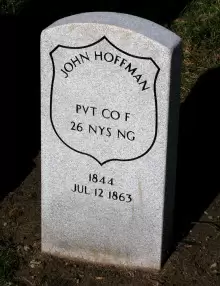
HOFFMAN, JOHN (1844-1863). Private, 9th New York Light Artillery; 56th Regiment, New York State National Guard, Company F. As per his pension index card, Hoffman first served with the 9th New York Light Artillery. Although the soldier records do not confirm an age match, a John Hoffman enlisted as a private at New York City on June 6, 1861, mustered into the 9th Light Artillery five days later, and was discharged for disability on April 11, 1863, at Fort Reno, District of Columbia. In 1863, Hoffman, a resident of New York, enlisted in the 56th New York National Guard for 30 days. The regiment was raised in Brooklyn, ordered to Harrisburg, Pennsylvania, on June 18, 1863, and mustered out at Brooklyn on July 24 of that year. He died when he was struck and killed by lightning in Cavetown, Maryland. In 1882, his mother applied for and received a pension, certificate 209,993. Section 115, lot 13536 (Soldiers’ Lot), grave 62.
HOGAN, DANIEL MONTGOMERY (1843-1882). Private, 5th New York Infantry, Company G. Hogan was born in Alleghany, New York; the birth year is unclear. His enlistment record and the 1870 census hint to a birth year circa 1843; however the censuses of 1850 and 1860 which show him living with his parents in Niskayuna in Schenectady, New York, where his father was a farmer, indicate that he was born in 1846 or 1848, and his online family tree notes 1844.
During the Civil War, Hogan enlisted as a private at New York City on April 25, 1861, and mustered into Company G of the 5th New York on May 9. His muster roll notes that he was paid $6.84 from April 25 through May 14, 1861. A volunteer fireman before the war, he was sent with wagons from Savage’s Station, Virginia, on June 28, 1862. He was listed as missing at Manassas, Virginia (Bull Run) on August 30, 1862, where the 5th was heavily engaged, and returned to the regiment in September 3. He was detailed to the Pioneer Corps (an engineer unit) in November 1862 and mustered out with his company on May 14, 1863.
Alfred Davenport, who wrote “Camp and Field Life of the Fifth New York Volunteer Infantry, collected the newspaper announcement of Hogan’s death (which specified his late residence as 42 Gouverneur Street, New York, matching both the date of death and the address of the man interred at Green-Wood) and noted that, though quiet and modest, Hogan was one of only eight men in the regiment who carried a musket and was present at every fight that it took part in. He further noted that Hogan never spent a day in a hospital during his service.
As per Hogan’s online family tree, he married Mary Ann McKinley in New York City on December 21, 1864; they had six children. That document notes that the couple lived with his folks in Schenectady, New York, in 1865 before moving to New York City by 1870. As per the 1870 census, Hogan was 27 years old, lived with his wife and two children in New York City and worked as an engine driver. The 1875 New York State census reports that he lived with his wife and children in Brooklyn. The 1880 census reports that he lived at 42 Gouverneur Street in New York City, his last address. He was an engineer who was married with children. As per Green-Wood Cemetery records, his death was attributed to meningitis; however, his cause of death is recorded as cholera in the New York Episcopal Church Records for 1881-1882. Section 17, lot 17245, grave 312.
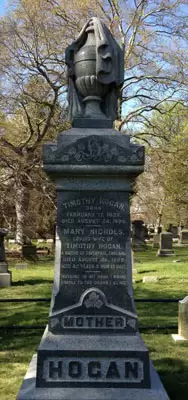
HOGAN, TIMOTHY (1835-1899). Contractor, Confederate States of America. Originally from Liverpool, England, Hogan immigrated to the United States on or about August 21, 1848. He was a sailor from the age of thirteen, was a seaman on the Dreadnaught, then was a ship’s captain of the Black Ball liners until 1856 when he became a stevedore in New Orleans, Louisiana. In 1858, he established the firm of Brown & Hogan there. During the Civil War, he contracted with the Confederate States of America to fortify New Orleans; he was building earthworks there when Admiral and Flag Officer David Farragut captured the city on April 20, 1862.
After spending time in Quebec, Hogan came to New York in August 1863, as per his naturalization papers. In 1872, he established Pinder & Hogan, a major stevedoring company in New York City, then ventured into building large steamships. He established the first steamship line to San Francisco, California, with the Conemaugh, Mineola and Montauk, and had an interest in ships traveling to Calcutta, India. The 1880 census reports that he was living in Brooklyn and working as a stevedore. On February 28, 1899, he became a naturalized citizen. According to his obituary in The New York Times, he headed T. Hogan & Sons on Bowling Green in Manhattan at the time of his death. His interests extended into the ship brokerage business and shipping properties. Although one obituary printed the rumor that he lost $250,000 in his interest in the Monarch Line, his losses were actually $40,000. Among Hogan’s many business ventures were the Lone Star Line, three vessels that traveled to Galveston, Texas; the Menantic Steamship Line, Limited, in Avonsmouth, England; and a joint partnership with Sanderson & Son and other firms in Liverpool for freight and cable lines. The Hogan family sold the CSS Merrimac to the United States government at the beginning of the Spanish-American War; the ship, a collier (coal supply vessel), was exploded and sunk by Naval Constructor Richmond Hobson in Santiago Harbor, Cuba, in a failed attempt to block the harbor.
A vice president of the Produce Exchange, he was at one time a director of the Maritime Exchange. Hogan was on the board of the directors of the Cuban and Pan-American Express Company, the Brooklyn Bank, and on the board of managers of the Sheltering Arms Nursery. In addition, he was a member of the Atlantic and Larchmont Yacht Clubs, the Marine and Field Clubs, and the Metropolitan Museum of Art. In the last year of his life, Hogan sold two of the vessels of the Lone Star Line, the Matteawan and the Miami to a California line after engaging in a rate war with the rival Mallory Line. He was a member of St. Matthew’s Protestant Episcopal Church. A millionaire, he last lived at 131 West 86th Street in Manhattan where his funeral was held. He died suddenly of cardiac arrest while coming home on a train after vacationing at Loon Lake in the Adirondack Mountains. Section 176, lot 21797.
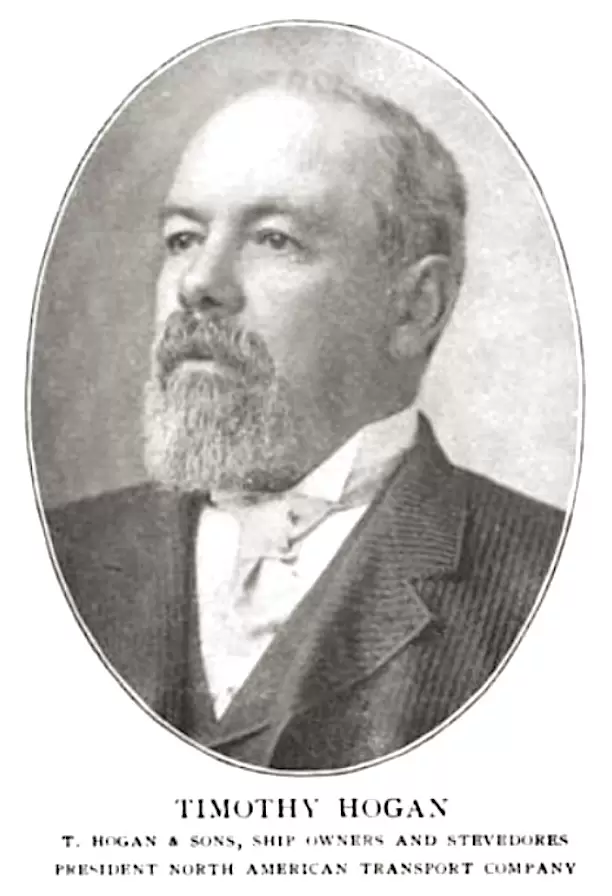
HOGG, DAVID (1822-1875). Captain, 42nd New York Infantry, Company I. Born in England, Hogg enlisted on June 22, 1861, at Long Island, New York, and was commissioned into the 42nd New York, also known as the Tammany Regiment, that day. On November 4, 1861, Lieutenant Colonel James J. Mooney, the commanding officer, wrote from Poolesville, Maryland, about the Battle of Ball’s Bluff, Virginia, on October 21. He noted in his field report that Hogg took command in “… taking care of and conveying the wounded to the hospital, and in standing in the intrenchments (sic) as a guard under a heavy and incessant fire from the enemy. Notwithstanding the inclement wind and storm that prevailed during the night, the men performed the disagreeable task assigned them without a murmur…” He was discharged on August 28, 1862, as per Special Order No. 77. At some point, Hogg was honored by his friend, John Morrissey, Esq., with a presentation sword, sash, belt, sword knot and shoulder braces at the Louisiana Hotel on Houston Street. Many of Hogg’s friends attended the ceremony in which Captain Hogg responded to the tributes made to him. In 1868, his application for an invalid pension was granted, certificate 95,578.
As per the census of 1870, Hogg was working as a clerk. He last lived at 272 Seventh Street, Manhattan. His obituary notes that he died after a painful illness. In 1876, Marietta Hogg, who is interred with him, applied for and received a widow’s pension, certificate 174,653. According to a descendant, he is buried in the lot next to his good friend and comrade, Colonel William A. Lynch (see) of the 42nd New York. Section 2, lot 7516.
HOGG, THOMAS (1820-1892). Private, 25th New York Infantry, Company D. Originally from England, the 1860 census notes that Hogg was living in the Yorkville neighborhood of New York City. During the Civil War, he enlisted as a private at New York City on May 16, 1861, to serve two years, and mustered into the 25th on June 14. As per his muster roll, he was paid by the State $10.08 from May 16 through June 14, 1861. Hogg was discharged with a surgeon’s certificate of disability on April 19, 1862, at camp near Yorktown, Virginia. He last lived in Manhattan at 49 East 12th Street. Section 80, lot 4936.
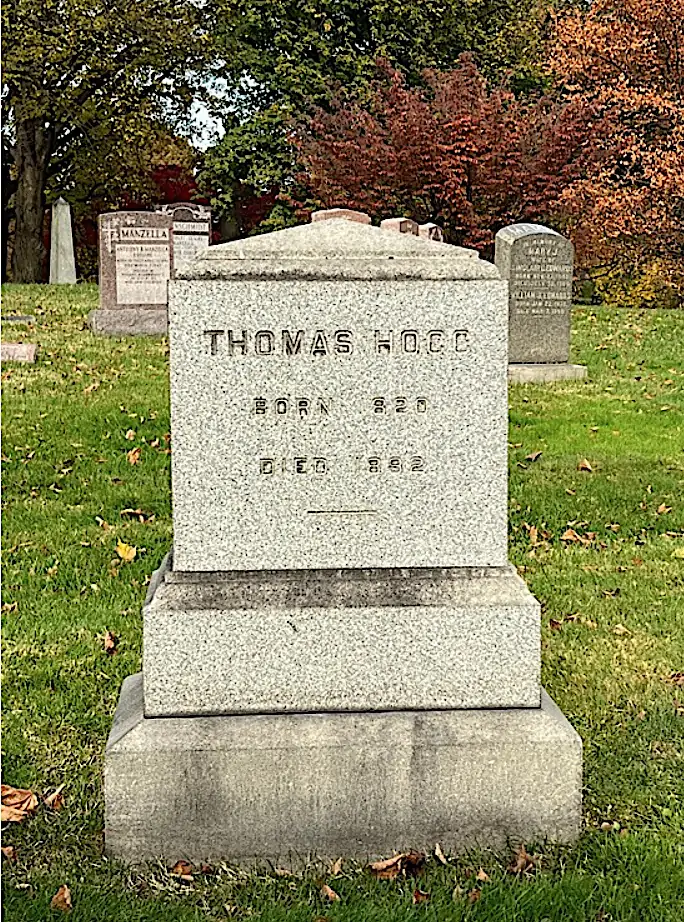
HOHORST, LOUIS (1844-1879). Corporal, 173rd New York Infantry, Company A. Of German birth, Hohorst immigrated to the United States, leaving from Bremen, Germany, aboard the passenger ship Orpheus, and arriving in New York City on August 23, 1856. During the Civil War, he enlisted at Brooklyn on September 19, 1862, as a private, and mustered into the 173rd New York on October 30. As per his muster roll, which incorrectly states that he was born in Philadelphia, Pennsylvania, Hohorst was a baker who was 5′ 6″ tall with brown eyes, light hair and a light complexion. On May 1, 1865, he was promoted to corporal. He mustered out on October 18, 1865, at Savannah, Georgia. He last resided at 248 Hamilton Avenue, Brooklyn. According to his obituary, he died several days after he sustained injuries at the Pierrepont stores when a heavy bale of goods fell and struck him on his back. Annie M. Hohorst, who is interred with him, received a widow’s pension in 1890, certificate 333,787. Section F, lot 18293.
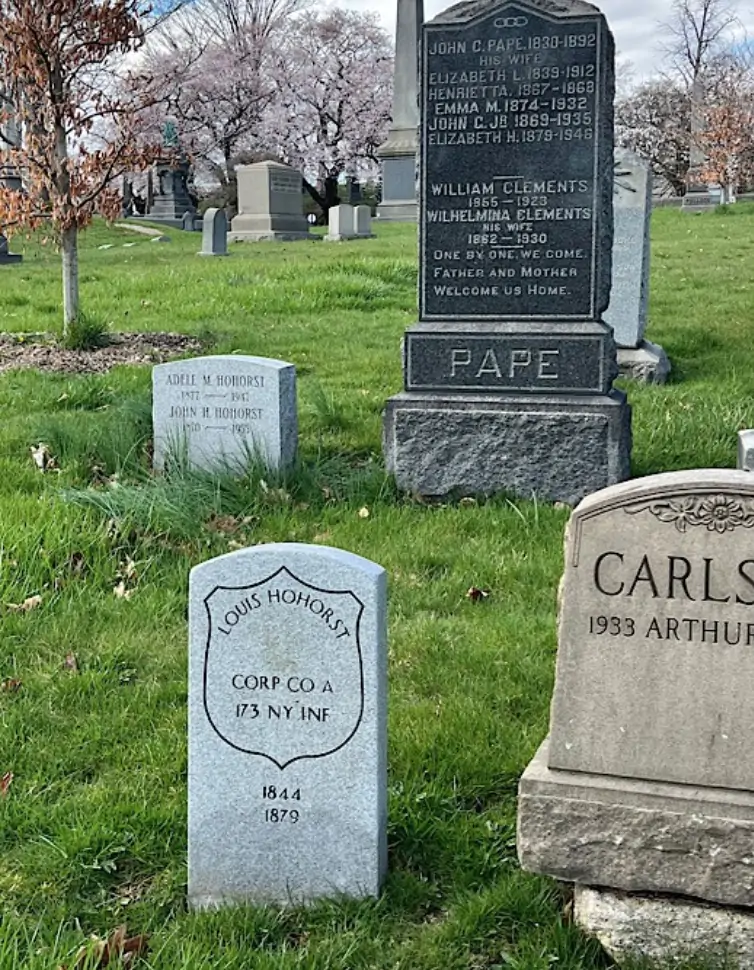
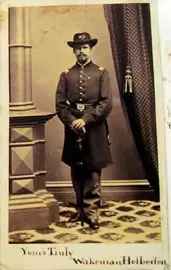
HOLBERTON, WAKEMAN (1839-1898). First lieutenant, 72nd New York Infantry, Company C. Holberton, who was born in New York City, was educated there and in Europe. According to a biography of Holberton in Trout Fishing in the Catskills by Ed Van Put (2014), he learned the sport of fly fishing around 1860 and developed a passion for that sport. During the Civil War, he enlisted at New York City as a second lieutenant on September 1, 1861, and was commissioned into the 72nd New York the same day. At some point, he was promoted to first lieutenant of his company before he was discharged on June 13, 1862. His obituary in The New York Times, which confirms his Civil War service, reports that he fought as a member of Sickles Brigade. He was also borne on the rolls as Huffman.
Van Put’s biography states that at the close of the War, Holberton became involved with the fishing tackle business and was the proprietor of the Sportsmen’s Emporium on Nassau Street in Manhattan. He was also a representative for the famous McBride flies used in fly-fishing. Because of his fame as a knowledgeable fly-fisher, he was patronized by the best anglers in the country. In addition, he took up the pursuit of sketching and painting fishing and hunting subjects. He honed his craft by living in the woods and at the seashore and inland river banks for weeks at a time. Considered an expert on the Catskills, the Adirondacks and the Yellowstone region of the West, he wrote articles for Forest and Stream, often using the pen name of Scarlet Ibis, about catching bass with flies. A sportsman, he was a member of several clubs including the New York Association for the Protection of Game and the Neversink Club, a trout-fishing club in the Catskills of which he was the secretary-treasurer. (The Neversink Club restricted its members to catching 25 fish per day with a size limit of 7 inches.) Holberton advocated making a standard system for naming flies because anglers did not know the names of the fly or flies they had success with; each similarly-named fly was tied differently, leading to confusion. He invented a style of tying flies that was patented as the “Fluttering Fly,” because it was tied in the opposite direction of standard flies. In 1882, he produced a chart showing a hand-painted brook trout surrounded by a border of sixty-four fly patterns, each given a name and titled, Standard American Trout Flies. He later produced a similar chart with a set of forty flies titled Standard American Black Bass and Lake Flies. In 1887, he wrote The Art of Angling. He went to Newfoundland and Labrador to hunt caribou and fished in every famous stream and lake in America, becoming renowned as a fly-caster.
Also an artist, Holberton painted trout, birds, and lakes and rivers. His interest in protecting the wilderness of the Adirondack Mountains from encroaching business led him to write to The New York Times in 1889, “…I see the folly of allowing the destruction of that magnificent country which supplies so many of our rivers and furnishes sport and recreation for thousands.” Holberton also advised anglers, “Do not catch or kill more fish or game than you can use; do not keep fingerlings, or fish for numbers, or descend to poaching in any shape; treat farmers civilly, and respect their rights; by so doing, you will find that your angling trips will be a joy forever.” The New York Times praised his work, Recollections of an Angler, a personal account for his family containing 101 pages of one season’s fishing trip in New York, Pennsylvania and Yellowstone including articles, five full page watercolors and 48 smaller watercolors, and 130 pen and ink sketches. His major essay, “That Big Trout,” appeared in Outing Magazine in June 1893, detailed a fishing trip along the Lycoming River near Ralston, Pennsylvania. That piece described roasting trout on buttered paper, wrapped in wet newspaper and nested in the hot coals of a “dry wood’ fire and reaching the ultimate prize: catching the big trout that was “king of the waters.” The excerpt below details his big catch:
…The law at that time forbade trout-fishing after August fifteenth. One dark, showery afternoon, a few days before the close of the season, I started out to try for a few trout, which I needed as models to finish a picture I was painting. Among other favorite spots, I visited the pool under the railroad bridge. After considerable hard work I managed to secure half a dozen fair specimens, and was about turning back, when I thought, as it was dark under the mountains, I would try one cast more with a bright fly; so I selected a No. 8 white winged coachman and a fresh leader, and tried it once more. Just below me a newly fallen tree laid close over the water, and a lucky cast dropped the coachman well under the branches. There was a sob and a big bell in the water. I struck sharply, and thought to myself, “I’ve got him!” I felt it at once, and knew that I was fast to that big trout. Slowly and grandly he sailed up-stream, fortunately without the other flies hooking to the fallen tree. What a monster he looked, with his dorsal fin cutting through the water! He seemed too dignified to show much fight, but pulled strongly, and I was afraid to put too much strain on him. For fifteen minutes (and it seemed like an hour) he kept me on the anxious-seat, but at last I got the landing net under him and the big trout was mine. I had my boy with me, carrying a pail, so I plumped him in and hurried back to the hotel, where I put him in a big washtub under the spring. Here he lived for some time, the wonder of the village, and so at last I had caught the big trout I had been hoping for for years. He was seventeen inches long, and weighed two pounds plump—a royal fish for a mountain stream, though not equal to a Rangeley monster. Still, I have yet to catch a larger one, and I have been trout-fishing for many years.
Other articles by Holberton appeared in Harper’s Weekly and the American Angler. In 1895, he applied for an invalid pension that was granted under certificate 931,251. According to his obituary in The New York Times, Holberton was a near invalid the last four years of his life after becoming paralyzed in his left side and arm caused by exposure during a winter caribou hunt in Newfoundland. His last residence was in Hackensack, New Jersey. Holberton’s funeral took place at the Christ Church of Hackensack. The cause of his death was apoplexy. Sarah Holberton received a widow’s pension shortly after his death in 1898, certificate 535,976. The pair of oil paintings, below, painted by Holberton in 1871, sold at auction in 2013 for $3,750. Section 54, lot 1055.


HOLBROOK, HENRY HARDING (1834-1910). Captain, 51st New York Infantry, Companies H, I, and C; private, 7th Regiment, New York State Militia, Company K. Born in Boston, Massachusetts, he was living there with his parents and siblings at the time of the 1850 and 1855 censuses. His obituary in the Seventh Regiment Gazette, Volume 24, Issue 6, states that Holbook was studying medicine in New York City at the onset of the Civil War. Holbrook initially enrolled at New York City on April 17, 1861, to serve in the 7th Regiment when it was activated for 30 days. After being mustered into Company K nine days later, he mustered out with his company on June 3 at New York City. He re-enlisted at New York City as a first lieutenant on June 15, 1861, was commissioned into Company H of the 51st New York on October 29, 1861, and rose to captain on March 19, 1862, effective upon his transfer that day to Company I. On September 12, 1862, he was discharged. Returning again to service on July 17, 1863, he enrolled at Milldale, Mississippi, was promoted a second time to captain on September 7, 1863, was simultaneously commissioned into Company C of the 51st, and mustered out on October 6, 1864.
Holbrook was living in New York City as per the 1870 census. In 1888, he applied for and was granted an invalid pension, certificate 431,479. His pension index indicates that he also served as an aide-de-camp, United States Volunteers. As per the 1900 census, he was living with his nephew in Morristown, New Jersey. His obituary in the Seventh Regiment Gazette, which validates his Civil War service, reports that he retired from the Union Army with the rank of major; that rank is not confirmed by his pension index. His last residence was in Morristown, New Jersey. Section 160, lot 13099.
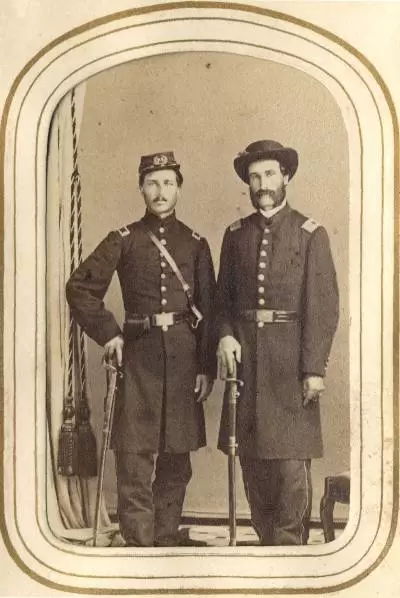
HOLBROOK, MELLEN TAFT (1822-1909). Brigadier general and colonel by brevet; lieutenant colonel, 173rd New York Infantry, Company E. A native of Menden, Massachusetts, Holbrook was a resident of Brooklyn at the time of the 1850 census. During the Civil War, he enlisted on October 11, 1862, at Brooklyn, and was commissioned into the 173rd New York on that day. He was promoted to lieutenant colonel on May 14, 1864. He was brevetted brigadier general on March 13, 1865, “for gallant and meritorious conduct at Cane River Crossing, Louisiana.” On October 18, 1865, he was honorably discharged at Savannah, Georgia. On May 23, 1866, he was brevetted colonel “for conspicuous gallantry at Pleasant Hill, [Louisiana], on April 9, 1864.” The 1870 census reports that he was living in New Dorp, Staten Island. The 1880 census notes that he was living in Brooklyn and employed as a police sergeant. Holbrook applied for and was granted an invalid pension in 1891, certificate 721,680. His last residence was in Cornwall, New York. Section 146, lot 24449.
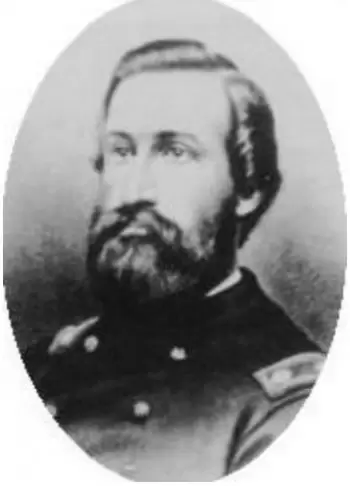
HOLDEN, ALBERT WHITTEMORE (1827-1866). Private, 178th New York Infantry, Company A; 2nd Battalion Veteran Reserve Corps, 80th Company. A native of New York City and a carpenter by trade, Holden was living in New York City with his wife and two small children (and another family) at the time of the 1850 and 1855 censuses. During the Civil War, he enlisted at New York City as a private on December 12, 1862, and mustered into the 178th on June 18, 1863. As per his muster roll, he was 5′ 5½” tall with blue eyes, sandy hair and a light complexion. After being stationed in Washington, D.C., as provost guard from July 9-October 31, 1863, his regiment engaged in battles at Camden, Mississippi, on February 1, 1864, at Jackson, Mississippi, on March 1, 1864, and in the Red River Campaign in Louisiana from March 10-May 22 of that year. He suffered from chronic diarrhea and was hospitalized at the Marine Hospital in Vicksburg, Mississippi, from June 30, 1864-June 30, 1865, the date on which he was transferred into the 2nd Battalion Veteran Reserve Corps, 80th Company, from which he was discharged five months later on November 30. His last address was 454 Second Avenue in Manhattan where he died from sunstroke. In 1898, Marianna Holden applied for and received a widow’s pension, certificate 480,734. Section 69, lot 4098.
HOLDSWORTH (or OLDSWORTH, HOLDWORTH), SAMUEL (1827-1891). Sergeant, 15th New York Engineers, Company B. Of English birth, he was listed as Samuel Oldsworth in the 1850 census and was living in New York City. During the Civil War, Holdsworth enlisted at New York City as a private on May 9, 1861, and mustered into Company B of the 15th Engineers on June 17. On March 26, 1862, he was promoted to corporal and to sergeant on November 1. The 15th Engineers was at Franklin’s Crossing, Virginia, from April 29-May 2, 1863; the unit had previously built a bridge at Fredericksburg across the Rappahannock River on December 11, 1862, just prior to the battle there. He was discharged from military service on June 25, 1863.
The 1870 census, which spells his surname as “Holsworth,” reports that he was living in Newton, Queens. In civilian life, he was the proprietor of Queens County Wire Works, a manufacturer of all kinds of wire goods and wire cloth. The business, which began in Manhattan in 1861, when it was located at 65 West Broadway, moved to Brooklyn in 1884. The goods were displayed in the storefront at 581 Grand Street, corner of Humboldt Street in Brooklyn. The factory was located on Broad Street, near Grand in Maspeth, Queens. The factory, a one-story frame building outfitted with the most modern mechanical equipment, had between nine and twelve employees. A description of the enterprise noted, “Here all kinds of wire work for cemeteries and store windows and brass, copper, iron, and galvanized wire cloth for skylights, cellar and church windows, etc., are produced together with galvanized wire fence, arches, settees, counter-guards, office railings, stall guards, sieves, riddles, coal screens, sand screens, leader strainers, wire signs, moss baskets, flower stands, window guards, nursery fenders, iron window guards, basement gates, barb wire fence and coal sifters.” In 1878, the business was awarded a medal of excellence for wire cloth at the American Institute, New York. The aforementioned business description confirmed Holdsworth’s service in the Civil War. Holdsworth was a member of Mansfied Post#35 of the G.A.R. His son, Joseph Holdsworth, joined him in the business. In 1890, Samuel applied for and received an invalid pension, certificate 683,289. His last residence was 229 Maujer Street in Brooklyn. Shortly after his death from enteritis in 1891, his wife was granted a widow’s pension, certificate 314,346. Section 63, lot 6843.
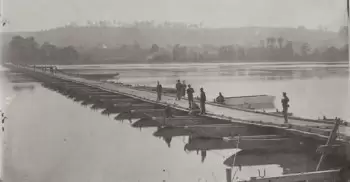
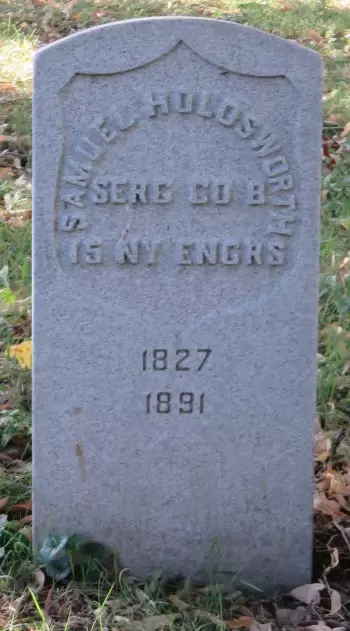
HOLLAND, DANIEL POPE (1830-1889). Lieutenant colonel, 1st Florida Infantry, Confederate States of America. Originally from Cork, Ireland, Holland immigrated to the United States at about age 12. According to a descendant, family rumor has it that he fought in the Mexican War and then settled in Florida. He enlisted at Fernandina, Florida, as lieutenant colonel of Holland’s Battalion on November 12, 1861, and was appointed lieutenant colonel of the 1st Florida Battalion of Infantry on February 12, 1862 (when his battalion was consolidated). On March 2, 1862, under a flag of truce, he and six of his men were taken prisoner at Fernandina by the USS Onward. On March 10, 1862, a Union general wrote from Fernandina, on behalf of Holland, “He is anxious to be allowed to return to his family, on parole not to serve till exchange and assigns as his reason for asking such- that his family is entirely unprotected having left here during the evacuation of the place, and that his child is in such delicate health as to need his attention. I have no doubt his parole may be relied upon.” He was ordered released to his family at Tallahassee on March 26 by Rear Admiral Samuel Francis Du Pont, Commander of the South Atlantic Blockading Squadron. On May 13, 1862, he was dropped from his post when the battery was reorganized and he was not re-elected to his position. In June 1864, the 1st Florida was consolidated into the 10th Regiment Florida Infantry. Other records show a D. P. Holland served as an adjutant in the 7th Florida but there are no details.
After the Civil War, Holland lived in New York and Washington, D.C., where he was a prominent attorney in high-profile cases, defending Major John Gee for war crimes committed in North Carolina’s Salisbury Prison and participating in the impeachment trial of Florida’s Governor Harrison Reed. His last residence was 20 West 15th Street in Manhattan. His death was caused by a heart attack. Holland’s remains were moved from the receiving tomb to the Catacombs in 1908. Vault #12, Catacombs.
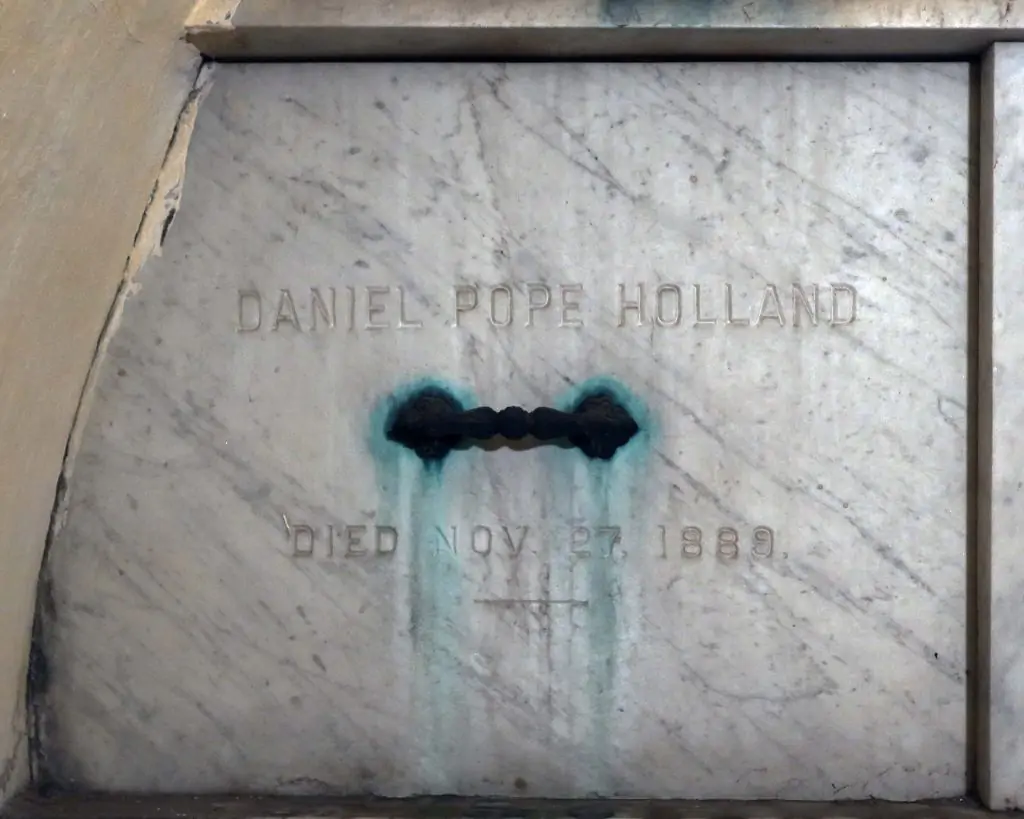

HOLLAND, JAMES H. (1832-1892). Second lieutenant, 133rd New York Infantry, Companies I and A. Originally from Ireland, Holland was a marble-cutter by trade. The 1860 census states that he was living in Williamsburg, Brooklyn, with his wife and two young children. After enlisting at Brooklyn as a sergeant on August 21, 1862, he mustered into Company I of the 133rd New York on September 24. As per his muster roll, he was 5′ 10½” tall with blue eyes, sandy hair and a sandy complexion. He rose to first sergeant on January 1, 1864, then to second lieutenant on December 25 of that year effective upon his transfer to Company A, and mustered out with his company on June 6, 1865, at Washington, D.C.
The New York City Directory for 1868 and the census of 1870 indicate that Holland was a marble-cutter; the 1870 census reported that his personal estate was valued at $100. The census of 1880 reports that he was a cartman. In 1883, his application for an invalid pension was approved under certificate 400,546. The Veterans Schedule of 1890 confirms his Civil War service and notes that he suffered from a “shot right foreman & ruptured” and “was totally unable to do any work.” As per his death certificate, he was a marble cutter. He last lived at 225 East 22nd Street in Manhattan. He died of heart disease. Section 127, lot 3611.
HOLLENBACH (or HELLENBACK), THEODORE (1836-1920). Private, 8th New York Infantry, Company E. Hollenback was born in Bavaria, Germany, and immigrated to the United States in 1856. During the Civil War, he enlisted as a private at New York City on April 23, 1861, and mustered into the 8th New York that same day. He mustered out on April 23, 1863, at Brooks’ Station, Virginia. On December 27, 1866, he took the oath of citizenship in New York City. The 1880 census notes that he was employed as a bookkeeper, and lived in Brooklyn with his wife, 10-year-old son and a servant. In 1890, he applied for and received an invalid pension, certificate 929,069. As per the 1910 census, he was a widower, lived in Brooklyn, was a naturalized citizen, could read and write English, and was self-employed. The 1920 census reports that he lived on East 32nd Street in Brooklyn with his son’s family. Papers filed in connection with his will reported that he had an estate of $1,900. He last lived at 776 East 32nd Street in Brooklyn where he died from heart disease. Section 194, lot 728641, grave 1.
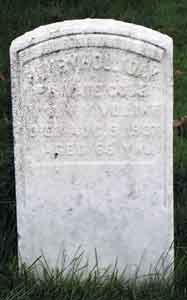
HOLLIDAY, MATTHEW HENRY (1839-1907). Private, 11th New York Infantry, Company E. After enlisting as a private at New York City on April 20, 1861, Holliday mustered into the 11th New York on May 7, and was discharged for disability on December 4, 1861. He was living in Brooklyn at the time of the 1865 and 1870 censuses.
A policeman in civilian life, the Brooklyn Daily Eagle featured four stories about him. The first, published on August 5, 1888, stated that Officer Holliday, of the firm of Boone & Holliday, night guardians of the Municipal Building, attended a picnic at the St. George Society before starting his vacation. Although Holliday lost at the high jump, he won the hammer throw and a carried off a Waltham watch, jeweled in fifteen holes and fitted with a seventeen foot spring. His partner, Boone, joked that “Holliday is pretty spry for his age, but insists that he is not half the man he ought to be at 68.” Another piece, published on March 30, 1890, related a story about a Newfoundland dog that Holliday used to own. Holliday said, “He was the most faithful and intelligent animal I ever came across in my life, and I have seen a few. He would rock the cradle for hours at a time, and was far better than a messenger boy for running errands. He could find me on post at night and often brought me things which I had forgotten when leaving home. Somebody poisoned him and twelve flue hens and a pet rabbit at the same time….” On September 4, 1892, the newspaper reported that Officer Holliday of the headquarters home guard had gone to Baltimore for a vacation and trip to the battlefields in Maryland and adjoining states “on which he fought, bled and escaped dying some thirty years ago.” Boone, his partner at headquarters, presented him with a home-bottled quart of cherry brandy and remarked of the “medicine,” “Not a headache in a hogshead of it.” The fourth Brooklyn Daily Eagle article, on July 15, 1894, described the story of Holliday and his trotting horse whose left ear was deaf from a ten inch iron spike that had been lodged in it for some time. Holliday claimed that the horse picked up the nail about three months earlier but the spike could not be removed until the inflammation subsided. Apparently, the spike disappeared from sight and the horse continued to do its duties without any problems for some time. However, as time went by, the horse became unmanageable and the spike was discovered to be still inside the left ear. After the spike was removed, Holliday showed it to others at headquarters and the horse seemed to be doing fine.
In 1892, he applied for and received an invalid pension based on his Civil War service, certificate 845,179; his pension was increased in 1907. The 1905 census reports that he was living in Brooklyn. His last residence was at 246 Ryerson Street. His wife received a widow’s pension under certificate 724,940. Section 135, lot 14964, grave 503.
HOLLINGSHEAD, WILLIAM M. (1837-1871). Private, 7th Regiment, New York State Militia, Company D. A native of New York, Hollingshead served for 30 days in 1861 with the 7th Regiment. He last lived in Brooklyn. His death was caused by diabetes. Section 148, lot 19565.
HOLLINGSWORTH (or HOLLINSWORTH, HOLLINGWORTH, HOLBEGEWORTH), THOMAS P. (1844-1922). Private, 37th Regiment, New York State National Guard, Company H. Of Irish birth, Hollingsworth immigrated to the United States in 1852. During the Civil War, he enlisted on May 29, 1862, at New York City, mustered into the 37th Regiment the same day, and mustered out after three months at New York City on September 2.
At the time of the 1870 census, he was living in Passaic, New Jersey; according to the 1880 census, which lists his surname as Hollingworth, he was living in New York City and employed as a lace manufacturer. Hollingsworth’s Civil War service is confirmed by the 1890 Brooklyn Veterans Census. The 1900 census reported that he had been married for 33 years and was living in Brooklyn. In 1907, his application for an invalid pension was approved under certificate 1,136,756. The 1910 census, which indicates that Hollingsworth was a naturalized citizen, reports that he was living on Jefferson Avenue in Brooklyn and was employed as a “commercial traveler” (traveling salesman) in the underwear business. He and his wife were living in Brooklyn at the time of the 1915 and 1920 censuses; the 1920 census, which lists an alternate spelling of his surname as Holbegeworth, states that he was still a “commercial traveler.” He last lived at 291 Locust Avenue in Freeport, Long Island. Arteriosclerosis took his life. Section 197, lot 29952, grave 4.
HOLLUB (or HULLUB), RUDOLPH S. (1838-1895). First lieutenant, 154th New York Infantry, Company G. Hollub was born in Austria. As per Mark H. Dunkelman, a historian of the 154th New York, Hollub, who was borne on the rolls as Hullub, was a veteran of the Austrian Army when he showed up at the camp of the 154th bearing a letter from Brigadier General Adolph von Steinwehr, commander of the Second Division, Eleventh Corps, to which the 154th was assigned. That letter requested that Colonel Patrick Henry Jones place Hollub in a vacant lieutenant’s position and the regiment’s officers soon approved of that appointment. After enlisting at Stafford Court House, Virginia, as a first lieutenant on April 16, 1863, the same day that he showed up at the camp, Hollub was commissioned into Company G of the 154th New York. He then was detached as a topographical engineer on General Steinwehr’s staff. He was discharged for disability on January 8, 1864.
His 1870 passport application indicates that he was a naturalized citizen. He described himself as being 6′ 2″ tall with dark brown hair, brown eyes, full beard, fair complexion, aquiline nose, small mouth, oval face and high forehead. According to an article on the Mesquite Street neighborhood in Corpus Christi, Texas, by Murphy Givens in the Caller Times on May 12, 2017, Hollub designed the Hullob County Courthouse there in 1875. That article, which confirms his Civil War service and states that he was a mapmaker who made sketches from balloons, notes that he worked as an engineer building the Tex-Mex Railroad and was an architect and artist. The 1880 census reports that Hollub lived in Medina, Texas, was married to Mathilde Denys (whom he married in the Evangelical Lutheran Church in Castroville, Texas) and worked as a surveyor. Section 74, lot 11623.
HOLLY (HOLLEY), LEWIS (1819-1900). Private, 16th Connecticut Infantry, Company I. Holly was born in Connecticut. As per the U.S. Army’s Register of Enlistments, 1798-1914, he enlisted as a boatman at age 18 at Stanford, Connecticut. He was 5′ 4″ tall with grey eyes, light hair and a light complexion. From August 5, 1840 through June 5, 1850, he was a private in the U.S. Army last stationed at the Hancock Barracks in Maine. He was living in Brooklyn with his wife and very young children at the time of the 1860 census. A resident of Stafford, Connecticut, he enlisted on July 24, 1862, and mustered into the 16th Connecticut the next month on August 24. During the Battle of Antietam, Maryland, he was wounded on September 17, 1862. Lewis mustered out on June 24, 1865. His application for an invalid pension was approved in 1869, certificate 99,365. In 1870, it is unclear whether he was living in Salisbury, Connecticut, or in Brooklyn; his name appears on both censuses but the Brooklyn census shows him with his wife and children while the Salisbury residence was not a family group. As per the 1880 census, he was living in Brooklyn and working as a machinist. He was a resident of the Soldiers’ Home in Washington, D.C., at the time of his death due to pneumonia. Section 180, lot 12598, grave 5.
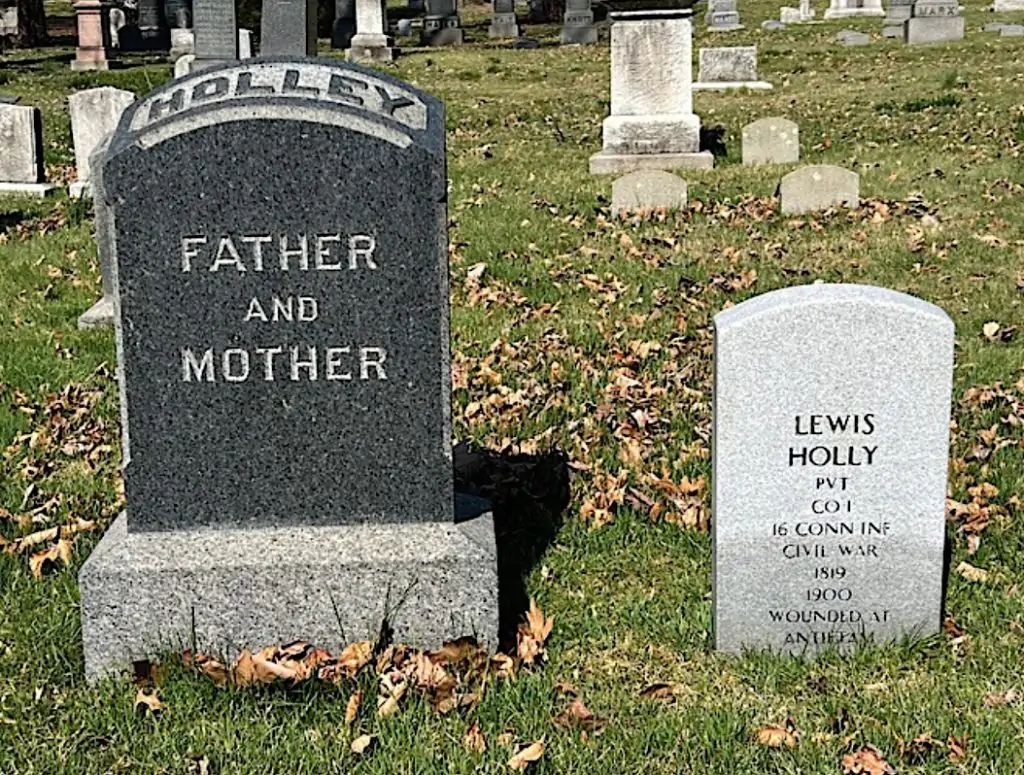
HOLMAN, JOHN (1831-1873). Private, 132nd New York Infantry, Company I. A native of England, Holman was living in Newtown, Queens, at the time of the 1850 census. During the Civil War, he enlisted at New York City as a private on August 15, 1862, and mustered into the 132nd on October 4. According to his muster roll, he was a painter who was 5′ 4½” tall with brown eyes, light hair and a fair complexion. He was discharged for disability on April 28, 1863, at New Berne, North Carolina. His last residence was in New York City. Sarah Holman applied for and received a widow’s pension in 1899, certificate 561,970. Section 161, lot 14847.
HOLMAN (or HOLLMAN, HOLERMAN), OTIS H. (1827-1864). Corporal, 158th New York, Company H. Born in Maine, he was a carpenter as per the 1850 census. During the Civil War, Holman enlisted at Brooklyn as a corporal on August 19, 1862, and mustered into the 158th on September 3. His muster roll notes that he was a carpenter who was 5′ 8″ tall with blue eyes, brown hair and a sandy complexion. The muster roll also reports that he was absent and sick at Chesapeake Hospital at Fort Monroe. As per his widow’s pension application which included reports of comrades and his physician, Holman contracted pulmonary phthisis (tuberculosis) while in service after catching a cold due to exposure. His comrade specified that the exposure occurred in December 1862 during damp and cold weather when the regiment moved to Suffolk, Virginia, and the men had to lay on the ground without shelter during a rain storm. He was discharged for disability on May 27, 1863, at Fort Monroe, Virginia. The Draft Registration Records of 1863 spell his name as Hollman. He died of consumption (tuberculosis) at his home on Bergen Street in Brooklyn on January 26, 1864. In 1866, Elizabeth Holman applied for and received a widow’s pension, certificate 113,568; two minor children were listed on her application. A subsequent letter to the pension department in 1868 noted that Elizabeth Holman was sick with consumption, poor, and unable to work. Section 115, lot 13536 (Soldiers’ Lot), grave 81.
HOLMES, JOHN W. (1846-1909). Unknown rank, unknown Massachusetts Regiment. Born in Belfast, Maine, he was the manager at a lumber-mill in Lowell, Massachusetts, by age 16. Holmes, a laborer and resident of Boston, Massachusetts, served in an unstated Massachusetts regiment as per The Eagle and Brooklyn (1893). That book notes that he answered President Abraham Lincoln’s call for troops at the beginning of the Civil War and served until its close.
In 1869, Holmes was attracted to show business, first associating with the Forepaugh Circus and the Sells Brothers’ shows. He then worked for P. T. Barnum for 13 years, beginning as a candy seller, before becoming manager and part owner of Frank Robbins’s traveling circus. He settled in Brooklyn in 1881. In 1882, he opened the Holmes Standard Theater and Museum on Fulton Street in Brooklyn. The museum exhibited curiosities purchased from the G. B. Bunnell Museum, a “dime” establishment in Brighton Beach, Brooklyn. An advertisement in the Brooklyn Daily Eagle on April 23, 1883, noted that Holmes spent $5,000 to purchase additional rare animals, birds and reptiles and planned to keep the museum open year-round. He abandoned that project in 1889 to build and later manage the Holmes Star Theater on nearby Jay Street which opened in September 1890. It was a 1,300 seat establishment where serious plays and melodramas were performed for six years until its sale to the Hyde and Behman Amusement Company. In 1898, he built the Bijou Theater in Jersey City, New Jersey, then was part-owner with Hyde and Behman of the Herald Square Theater in Manhattan (originally called the Park Theater), and proprietor of the Empire Theater in Brooklyn. Holmes retired from business in 1906. His obituary in the Brooklyn Daily Eagle confirmed that he served in a Massachusetts regiment during the Civil War. He last lived at 829 Carroll Street in Brooklyn. According to his obituaries, he died from paralysis following a long illness. Section 155, lot 25048, graves 7 and 8.
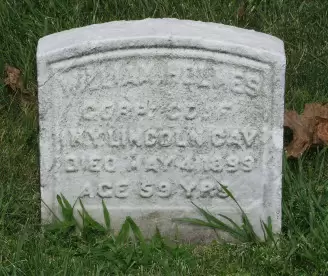
HOLMES, WILLIAM W. (1838-1899). Corporal, 1st New York Cavalry, Company F. A native of Oswego, New York, Holmes enlisted as a private at New York City and mustered into the 1st New York Cavalry on August 16, 1861. As per his muster roll, he was a bookbinder who was 5′ 8½” tall with blue eyes, light hair and a light complexion. He was promoted to full corporal on an unknown date. He re-enlisted as a corporal on January 1, 1864, returned to the 1st New York Cavalry and mustered out with his company on June 27, 1865, at Alexandria, Virginia. His pension index record also indicates service in Company C of the 2nd New Jersey Infantry; the dates of that service are unknown.
On October 26, 1885, Holmes mustered into Abel Smith Post #435 of the G.A.R.; he listed his occupation as bookbinder and his service in the 1st New York Cavalry in that organization’s descriptive book. In 1887, his application for an invalid pension was approved under certificate 853,163. He last lived at 633 Lorimer Street in Brooklyn. He succumbed to pneumonia. In 1899, Rebecca Holmes applied for and received a widow’s pension, certificate 483,643. Section 189, lot 17366.
HOLSTEBROE, EDWARD (1830-1913). Private, 1st Louisiana Infantry (United States), Companies D and A. Holstebroe, who was originally from Denmark (although the 1880 census says Germany), became a naturalized citizen on November 20, 1855. He enlisted in the 1st Louisiana Infantry (a Union regiment), also referred to as the New Orleans Infantry (United States). He was transferred from Company A into Company D the 1st New Orleans Infantry on March 5, 1865 as per Special Order No. 173 and mustered out on March 5, 1866. The 1869 New York City Directory shows that he was employed in oils at 212 West Street in Manhattan. The census of 1880 indicates that he was living in Jersey City, New Jersey, where he was working as a clerk. At the time of the Veterans Census of 1890 he was living in Hudson County, New Jersey; that census confirmed his service in the New Orleans Infantry. In 1902, he applied for and received an invalid pension, certificate 1,125,897. As per his death certificate, he was employed as a shipping clerk. His last address was 459 West 43rd Street in Manhattan. Shortly after his death from nephritis in 1913, Mary Holstebroe, who is interred with him, applied for and received a widow’s pension, certificate 767,275. Section 128, lot 12807, grave 71.
HOLT, EDMUND O. (1842-1874). Private, 7th Regiment, New York State Militia, Company C. After Holt enlisted at New York City as a private in April 1861, he mustered into Company C of the 7th Regiment for its 30 day activation. He was discharged at the expiration of his enlistment. His last residence was 369 Washington Avenue in Brooklyn. His death was caused by typhoid fever. Section 42, lot 9190.
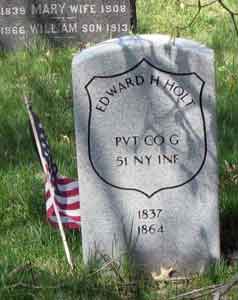
HOLT, EDWARD H. (1837-1864). Private, 51st New York Infantry, Company G. Holt grew up in Brooklyn. As per Base Ball Founders: The Clubs, Players and Cities of the Northeast, Edward and his brother Guy (see) both played for the Pastimes and both served in the Civil War. After enlisting at Brooklyn on August 24, 1861, Edward Holt mustered into the 51st New York as a private on September 12, and was discharged for disability on January 5, 1863, at Philadelphia, Pennsylvania. According to his obituary in the New York Herald, his death was attributed to disease contracted while in service to his country. His funeral took place at his parents’ house on Ryerson Street in Brooklyn. He died from consumption. On November 28, 1864, Bridget Holt applied for and received a widow’s pension of $8 per month, certificate 71,896. His child received a minor’s pension, certificate 163,703; that pension was terminated on January 26, 1895. Section 128, lot 31394, grave 460.
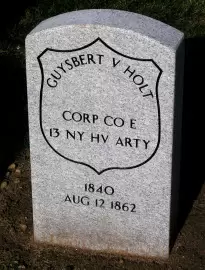
HOLT, GUYSBERT (or GUIJO, GUY) VANDENBROECK (1840-1862). Corporal, 13th Regiment, New York State National Guard, Company E. As per Base Ball Founders: The Clubs, Players and Cities of the Northeast, Guy and his brother Edward (see) both played for the Pastimes and both served in the Civil War. Guysbert Holt enlisted as a corporal at Brooklyn in June 1862 to serve in the 13th New York State National Guard (Heavy Artillery) for three months. He died of a gunshot wound while on picket duty in Suffolk, Virginia, on August 12, 1862. He last lived on Gates Avenue in Brooklyn. As per his obituary in the New York Tribune, his remains were taken from the receiving vault at Green-Wood by his company and interred with funeral honors in Green-Wood’s Civil War Soldiers’ Lot. Section 115, lot 13536 (Soldiers’ Lot), grave 42.
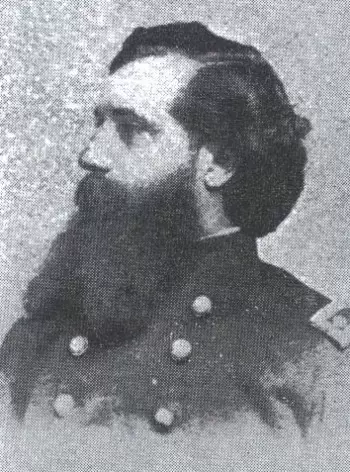
HOMISTON (or HOMESTON), JOSEPH MANSFIELD (or N.) (1829-1879). Lieutenant colonel by brevet; major and surgeon, 16th New York Cavalry; 3rd New York Provisional Cavalry; surgeon, 14th New York (Brooklyn Infantry); 178th New York Light Infantry. Born in Great Barrington, Massachusetts, he graduated from Yale College in 1850, then studied medicine in New Haven, Connecticut, before moving to Brooklyn in 1854.
An illustrious service in the military began when Homiston enlisted at Brooklyn on April 18, 1861, and was commissioned into the 14th Brooklyn’s Field and Staff on May 23. Surgeon William S. King, United States Army Medical Director, in his field report from Arlington, Virginia, on July 26, 1861, commended Homiston’s conduct five days earlier at Bull Run, Virginia, citing that he (and others in the medical staff) “preferred to remain rather than abandon their charge.” After he was discharged on October 13, 1862, he re-enlisted at Albany, New York, on April 2, 1863, and four days later was commissioned into the Westchester Light Infantry, which was consolidated into the 178th New York. Homiston served as an inspector for the Army of the Potomac and then served with the 16th New York Cavalry, also known as the Sprague Light Cavalry, as a major and surgeon from December 9, 1863 through August 17, 1865, during which time he was promoted to lieutenant colonel by brevet on March 13, 1865, “for faithful and meritorious service during the War.” The 16th Cavalry was part of the detachment that captured John Wilkes Booth after the assassination of President Abraham Lincoln. Homiston took part in many of the battles of the Army of the Potomac including the Wilderness, Chancellorsville and Fredericksburg in Virginia and at Antietam in Maryland. At some point, he was taken prisoner and confined for six months at Libby and Charlottesville Prisons. He was transferred to the 3rd New York Provisional Cavalry on August 17, 1865.
Upon Homiston’s discharge in 1866, Brooklyn residents welcomed him home with an open-air meeting in front of the Pierrepont House where he was presented with a medal by the citizens of Brooklyn for his faithful service. Dr. Homiston resumed his medical and surgical practice at Jay and Sands Street and earned a fine reputation. From 1869-1870, he served as a colonel under Major General John B. Woodward, Second Division, New York National Guard. Among the medals that adorn his uniform in the photograph below are one that denoted the Society of the Potomac and a Maltese cross given to him by his friends in 1862 for his heroism in treating the wounded after the Battle of First Bull Run. His obituary in the New York Tribune notes that he was a well-known physician in Brooklyn and confirms his service in the Civil War. In addition to his membership in medical societies, he was a member of the G.A.R., the Loyal Legion, and was a Knights Templar Mason. His last residence was at 96 Sands Street in Brooklyn. He succumbed to convulsions after suffering from general paresis for two years. Caroline Homiston applied for and received a widow’s pension in 1880, certificate 326,005. Section 67, lot 2025.
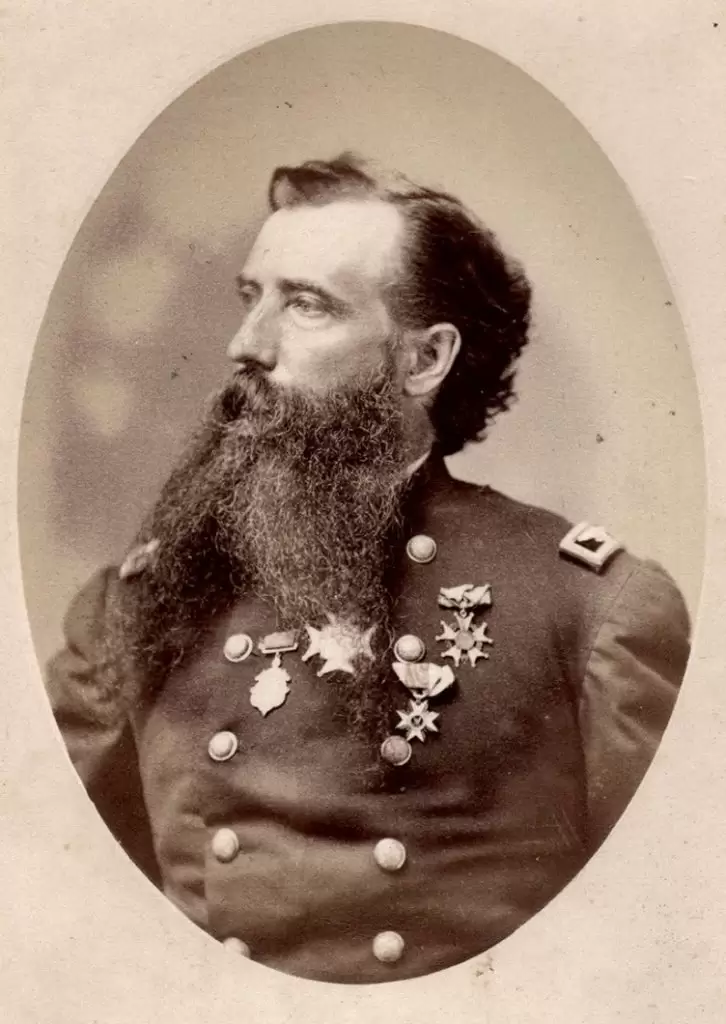
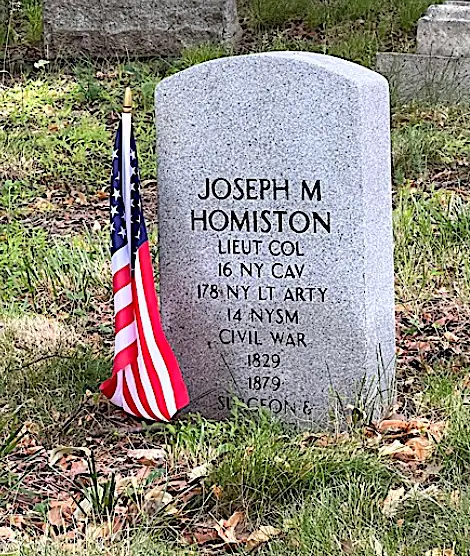
HONEYWELL, EUGENE (1841-1923). Private, 13th Regiment, New York State National Guard, Company B. New York City-born, he was living in Bushwick, Brooklyn, at the time of the 1850 census. During the Civil War, Honeywell enlisted at New York City on May 28, 1862, mustered into the 13th Regiment the same day, and mustered out with his company at Brooklyn on September 12 after serving for three months.
According to the census of 1870, he was living in Brooklyn with his wife and two young children; the 1880 census reports that he was a clerk in a store living in Brooklyn with his wife and two children and his mother-in-law. An article in the Brooklyn Daily Eagle on May 22, 1893, reports that Honeywell was a Custom House appraiser who testified that he examined three Swiss watches that were part of a jewelry smuggling case and affirmed that they were of foreign manufacture. In 1900, he was living in Brooklyn with his wife, mother-in-law, married daughter and child, unmarried daughter and teen-age helper. In 1907, he applied for and received an invalid pension, certificate 1,141,766. The 1910 census indicates that he had been married 47 years and was living on East 18th Street in Brooklyn, literate, paying a mortgage on his house, and working as a clerk. On July 18, 1913, Honeywell was mentioned in an article in the Brooklyn Daily Eagle after a burglar tried to jimmy his way into his house on East 18th Street. Honeywell heard the noise from the intruder, rushed downstairs, and the intruder fled the scene. The New York State census for 1915 reports that he was living in Brooklyn with his wife and unmarried daughter. Honeywell last lived at 690 East 18th Street in Brooklyn. His death was caused by apoplexy. Section 195, lot 31058.
HOOD, ROBERT (or ROBIN) (1836-1906). Sergeant, 12th New York Infantry, Companies F, D, and E; 5th New York Veteran Infantry, Company E. Born in Ireland, Hood enlisted at New York City as a corporal on October 1, 1861, and mustered that day into Company F of the 12th New York Infantry. At some unspecified time, he was reduced in rank to private. On January 16, 1863, he was promoted to sergeant, and then went through two intra-regimental company transfers, to Company D on June 23, 1863, and to Company E on January 1, 1864. He was transferred into the 5th New York Veterans on June 2, 1864. His muster roll states that he was also borne on the rolls as Robin Hood. In 1898, his application for an invalid pension was granted, certificate 989,288. The census of 1900 indicates that he was living in Manhattan with his wife of thirty-five years. As per his obituary in the New York Herald, he was a Freemason and a member of the James C. Rice Post #29 of the G.A.R.; members of both organizations were invited to attend his funeral. At the time of his death, he resided at 550 East 16th Street in Manhattan. He died from pneumonia. Section 136, lot 28307, grave 755.
HOODLESS, WILLIAM J. (1826-1903). Acting assistant paymaster, United States Navy. A native of New York, Hoodless was living in Manhattan at the time of the censuses of 1850 and 1860. Hoodless served in the Navy as an acting assistant paymaster beginning on September 30, 1862, when he was assigned to the steamer Glaucus, part of the North Atlantic Blockading Squadron. He re-enlisted as an acting assistant paymaster on November 3, 1864. While stationed off Cape Fear, North Carolina, on May 28, 1864, the Glaucus caught fire while pursuing a blockade runner and was nearly destroyed. After repairs in Philadelphia beginning June 9, 1864, the Glaucus was re-commissioned on August 22 but broke down on her way to New York City. After further repairs, the vessel later joined the West India Convoy Fleet and, after running aground in the Bahamas, was decommissioned on June 6, 1865. Hoodless’s resignation took effect on June 9, 1865. The 1880 census notes that he was an architect living in Manhattan; he was married with one child. He last lived in Manhattan at the intersection of West 92nd Street and Amsterdam Avenue. His death was attributed to “fatty degeneration of heart.” Section 188, lot 20789.